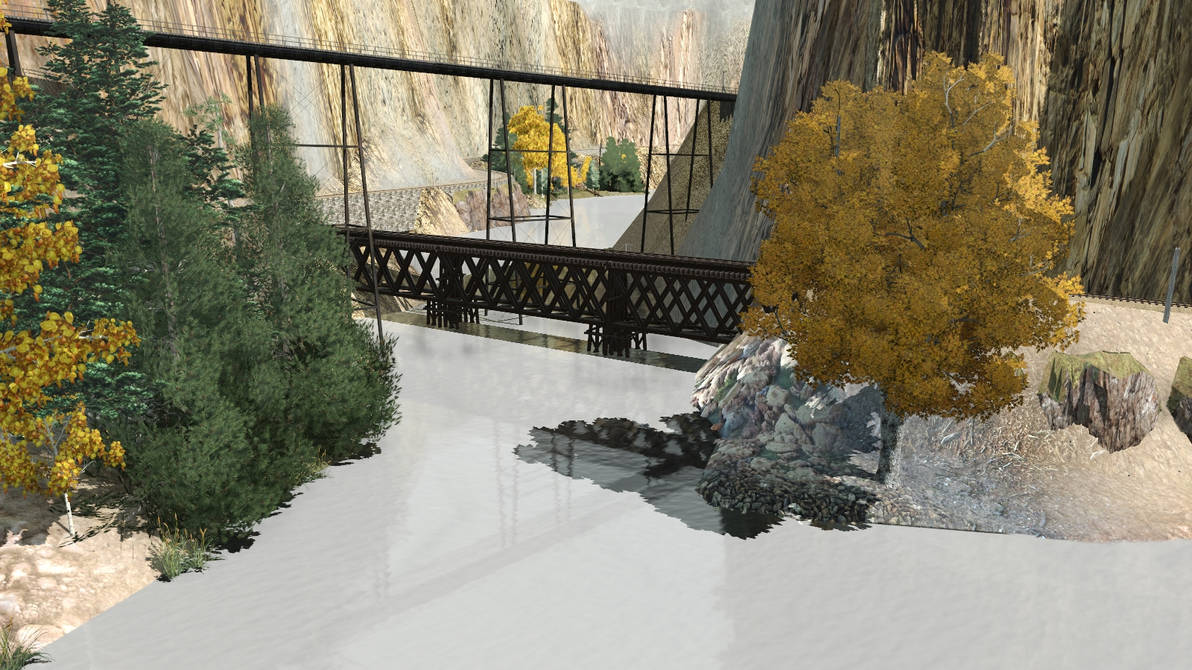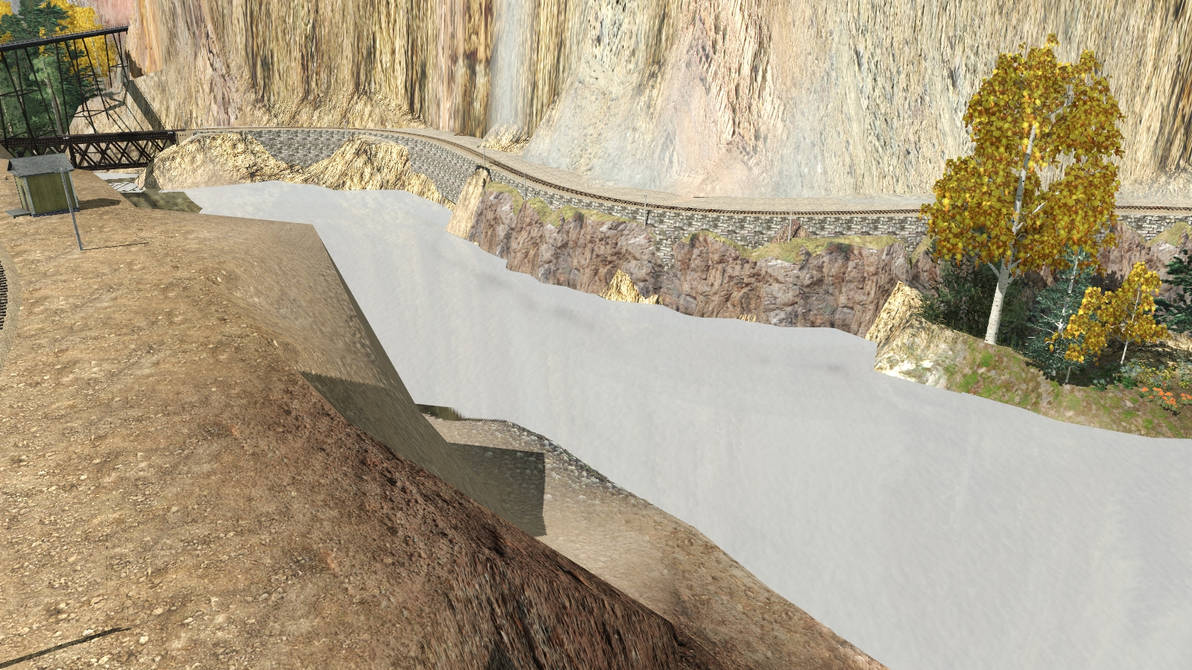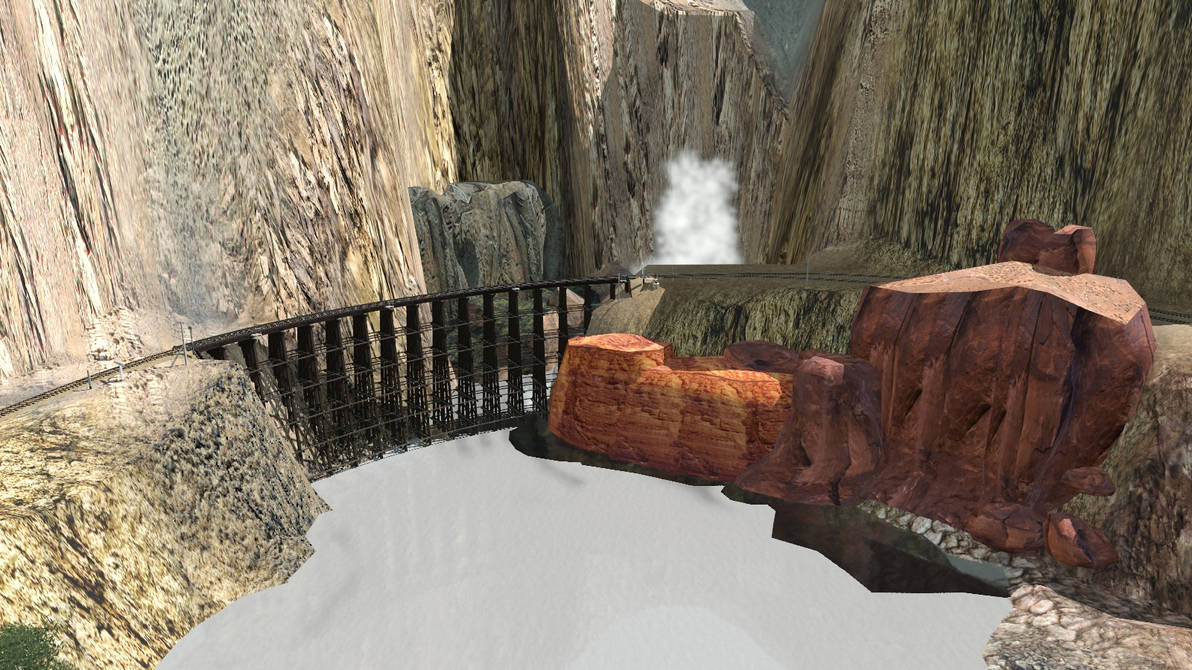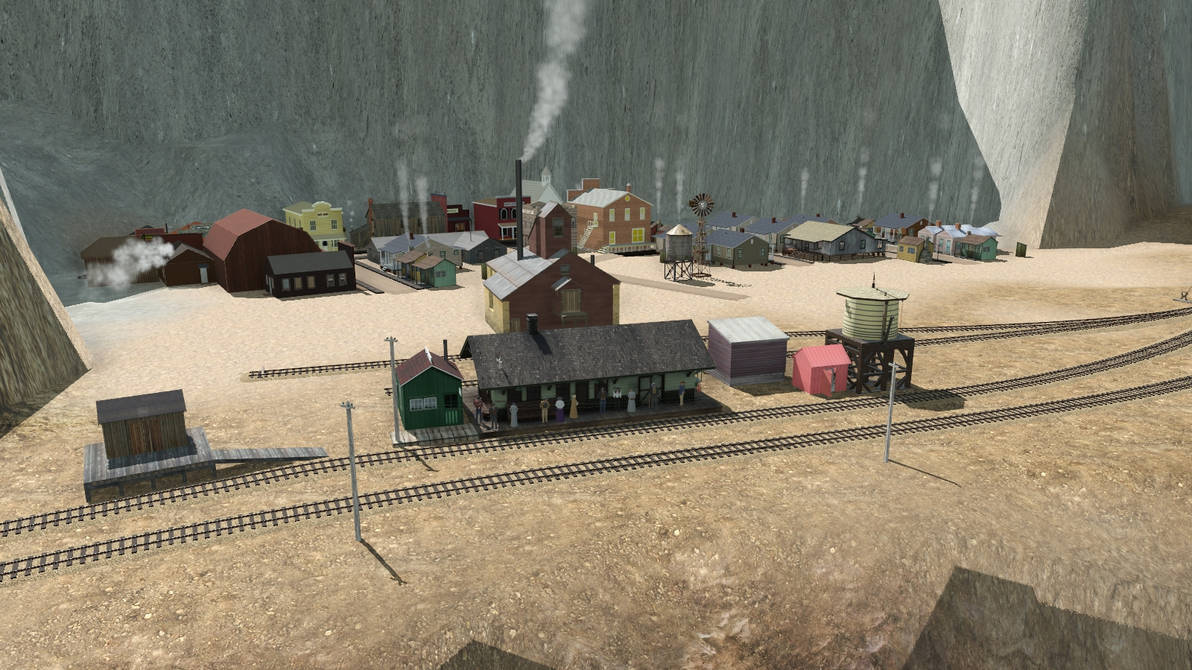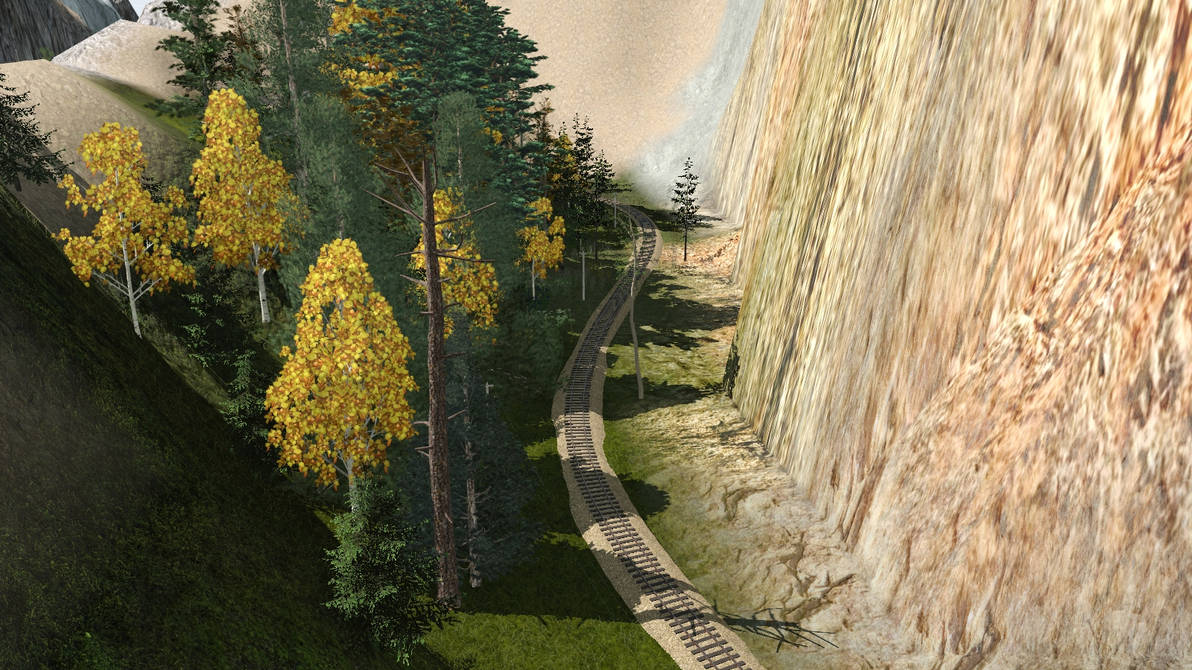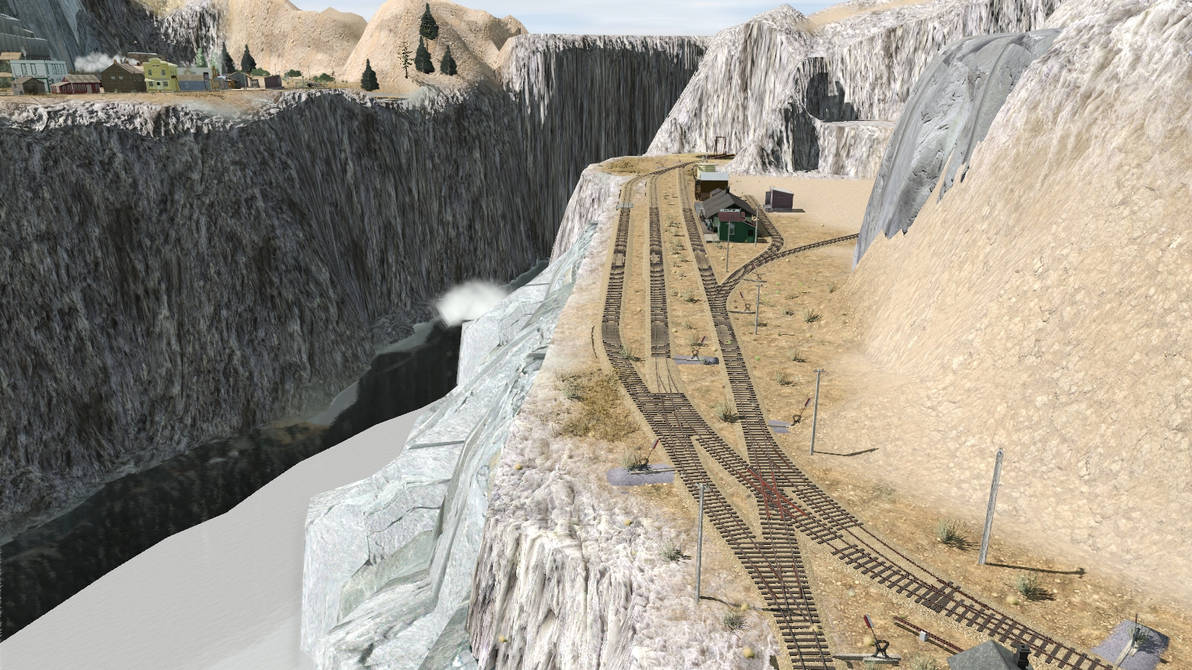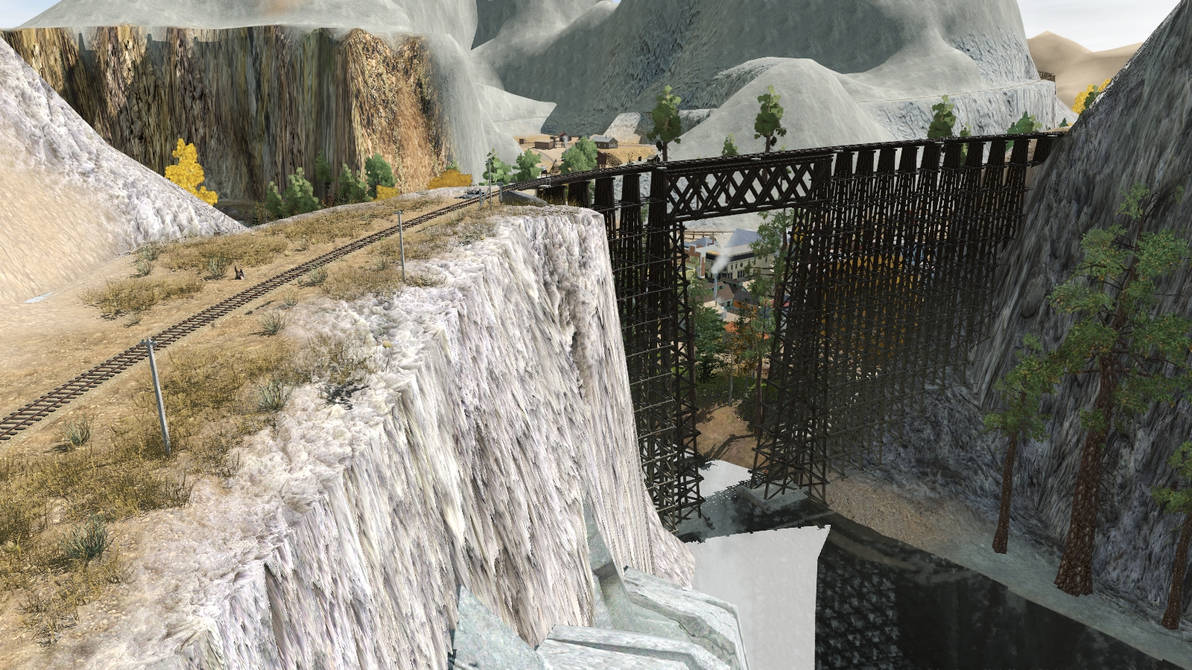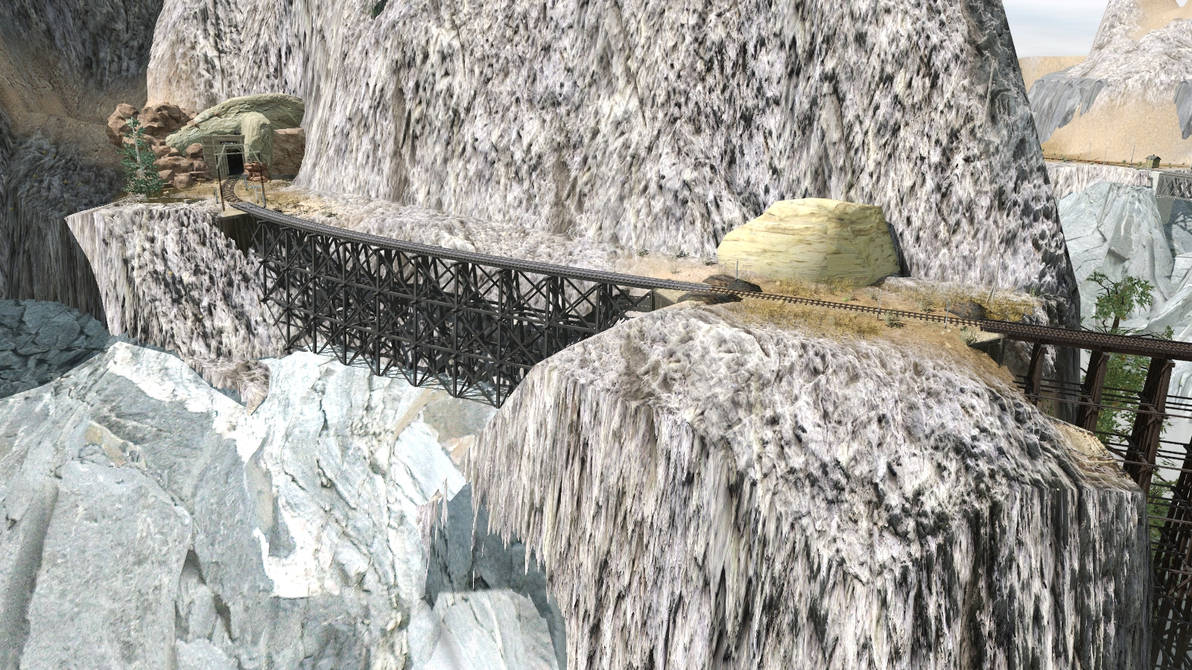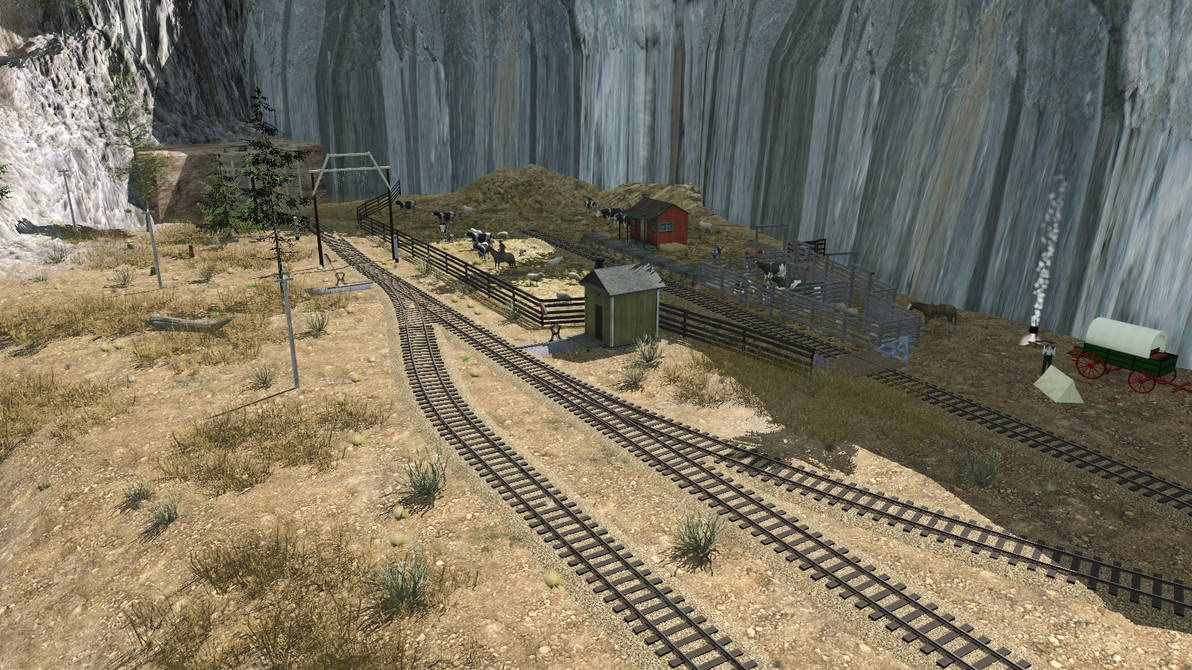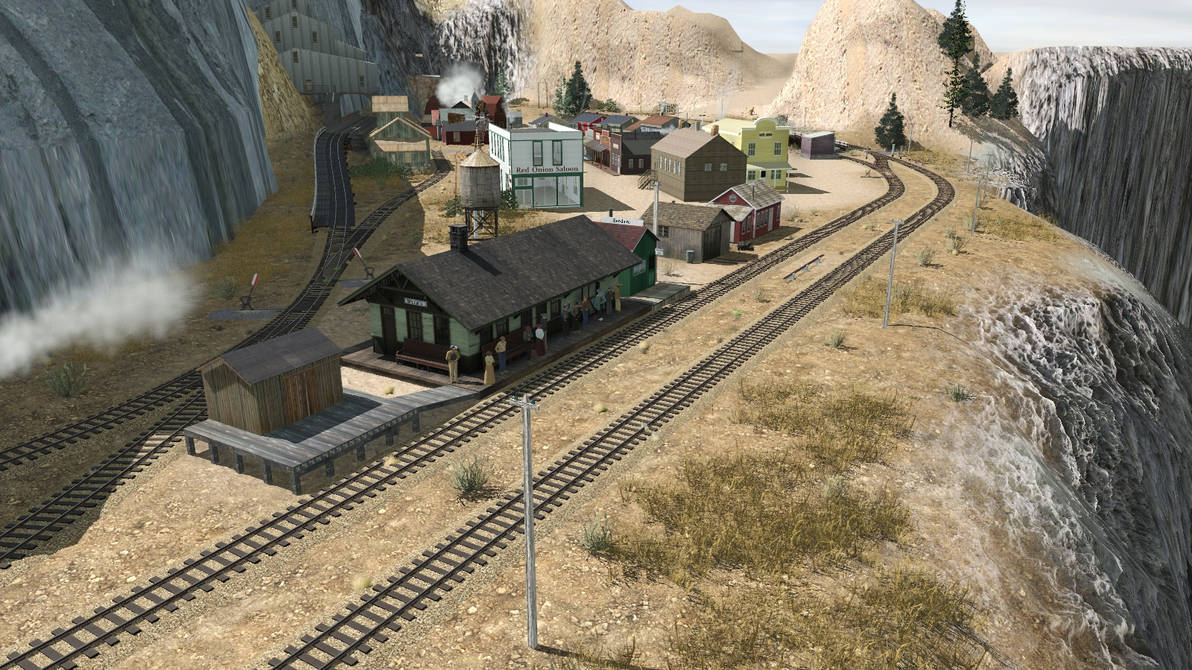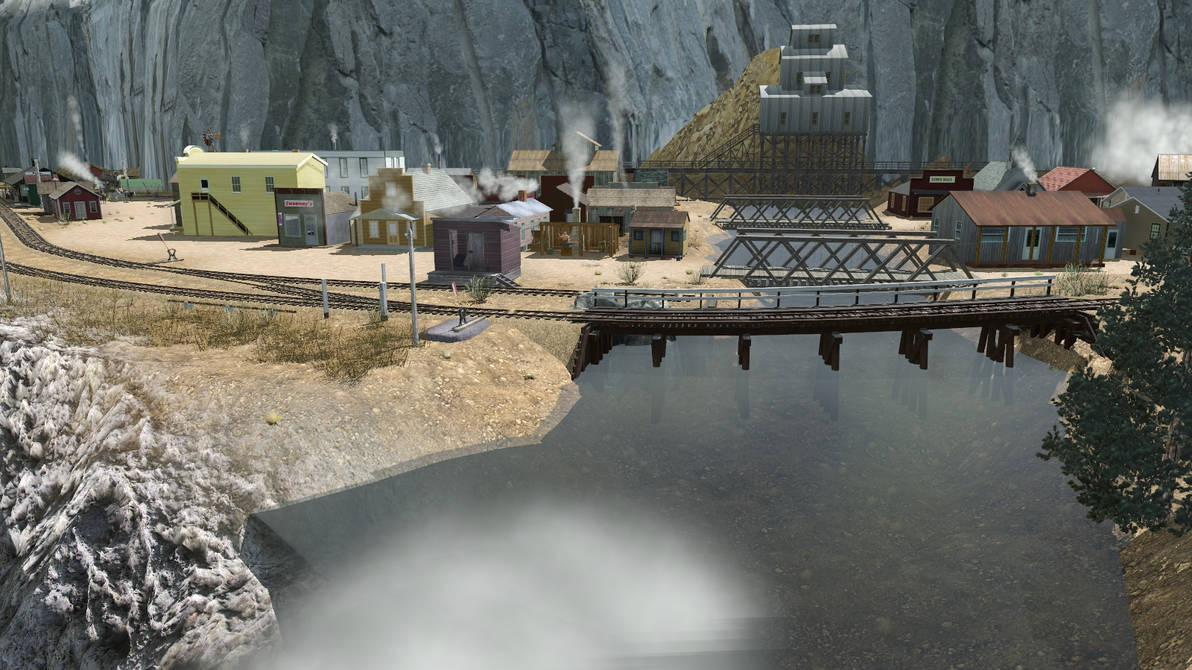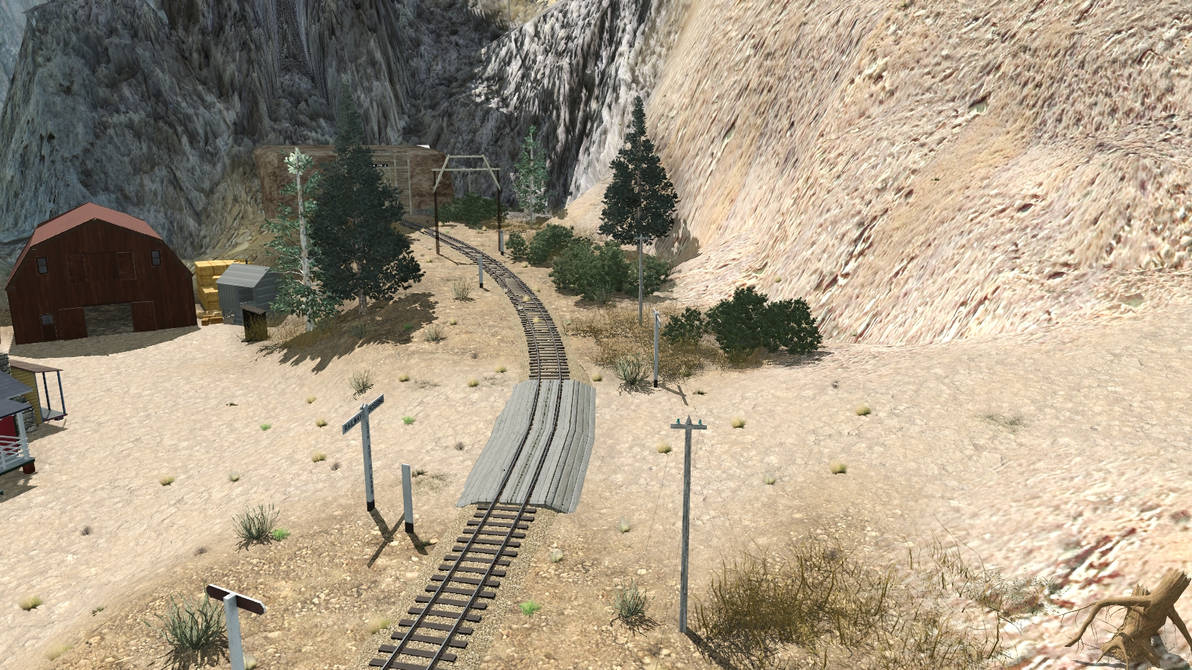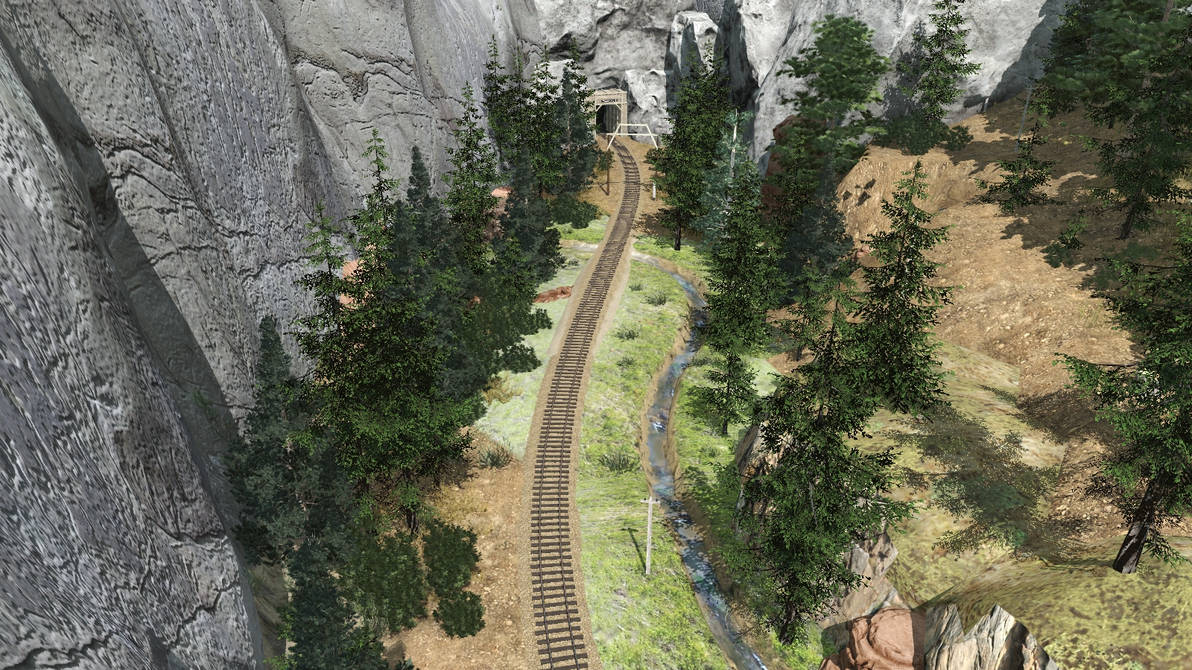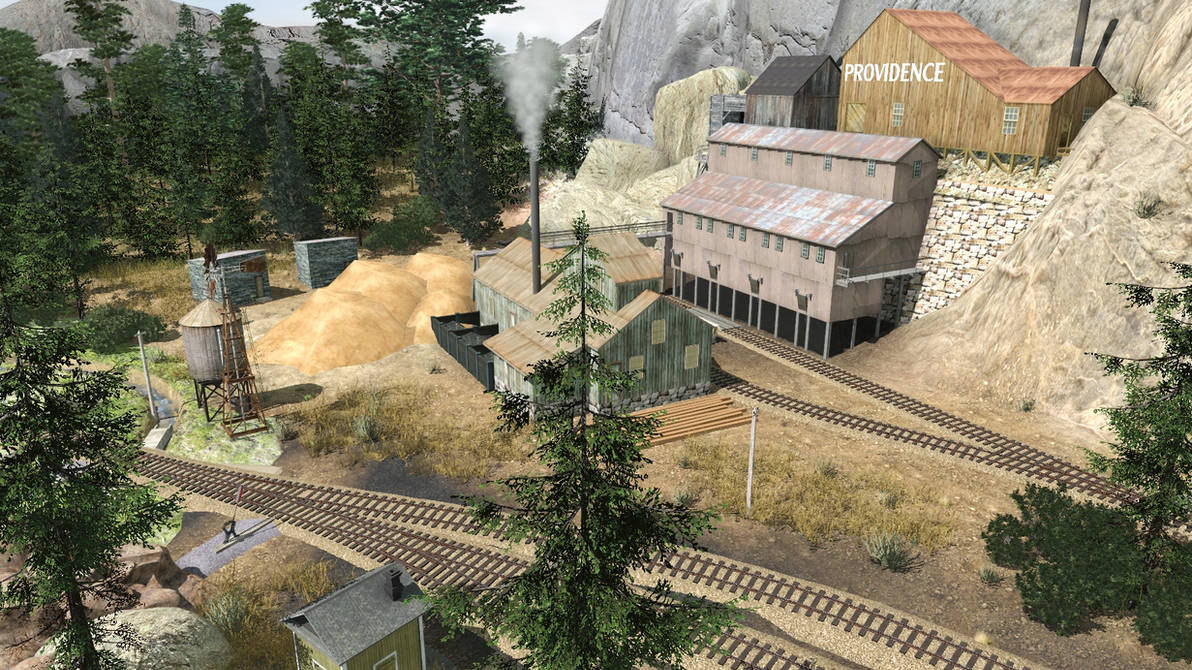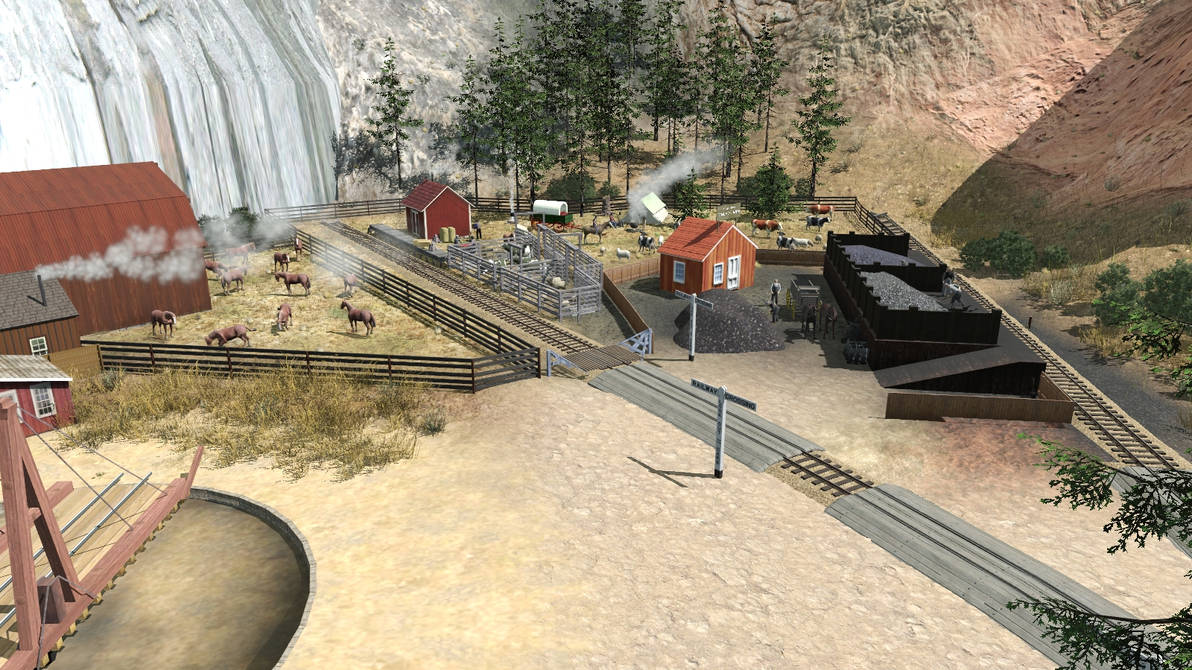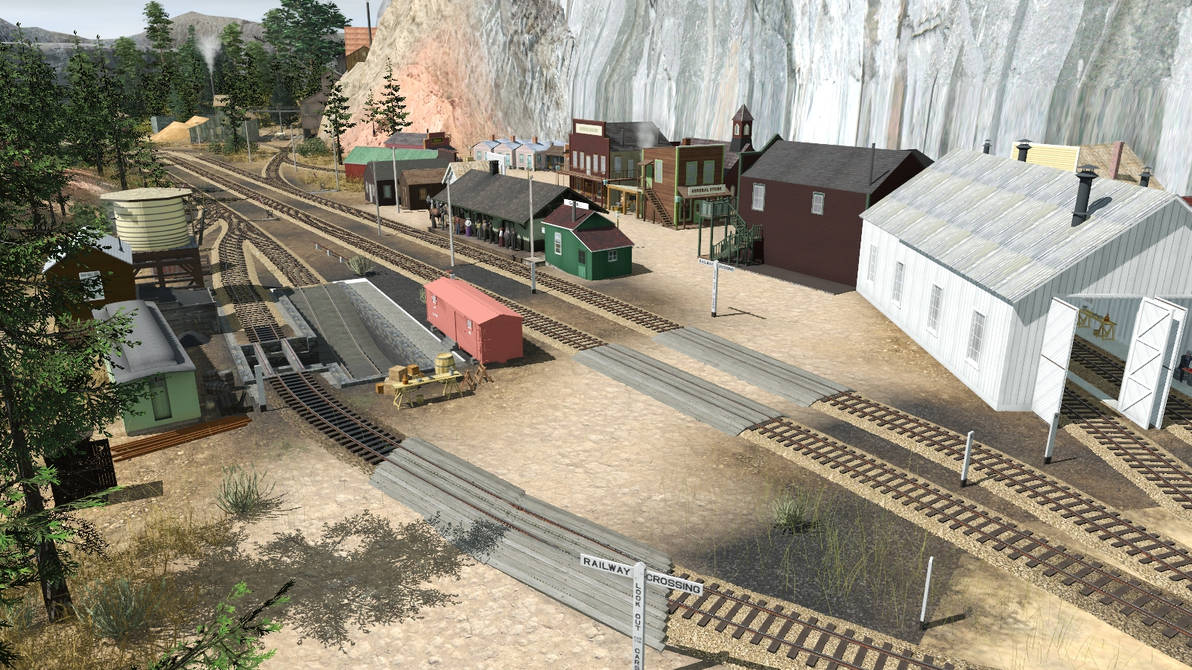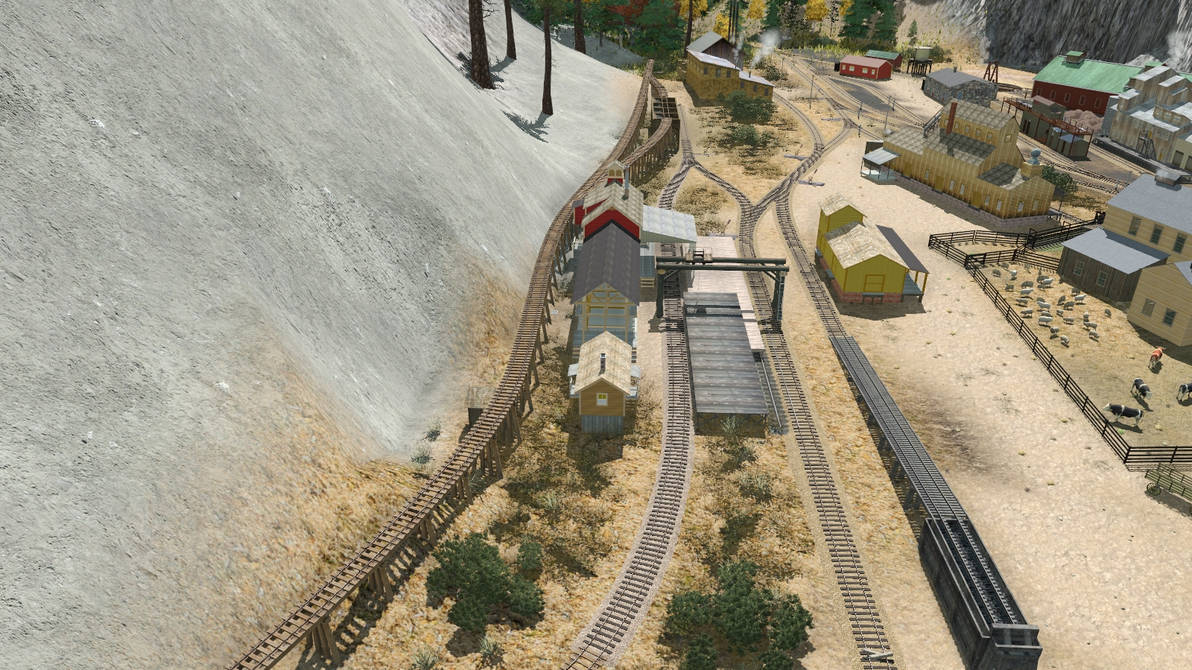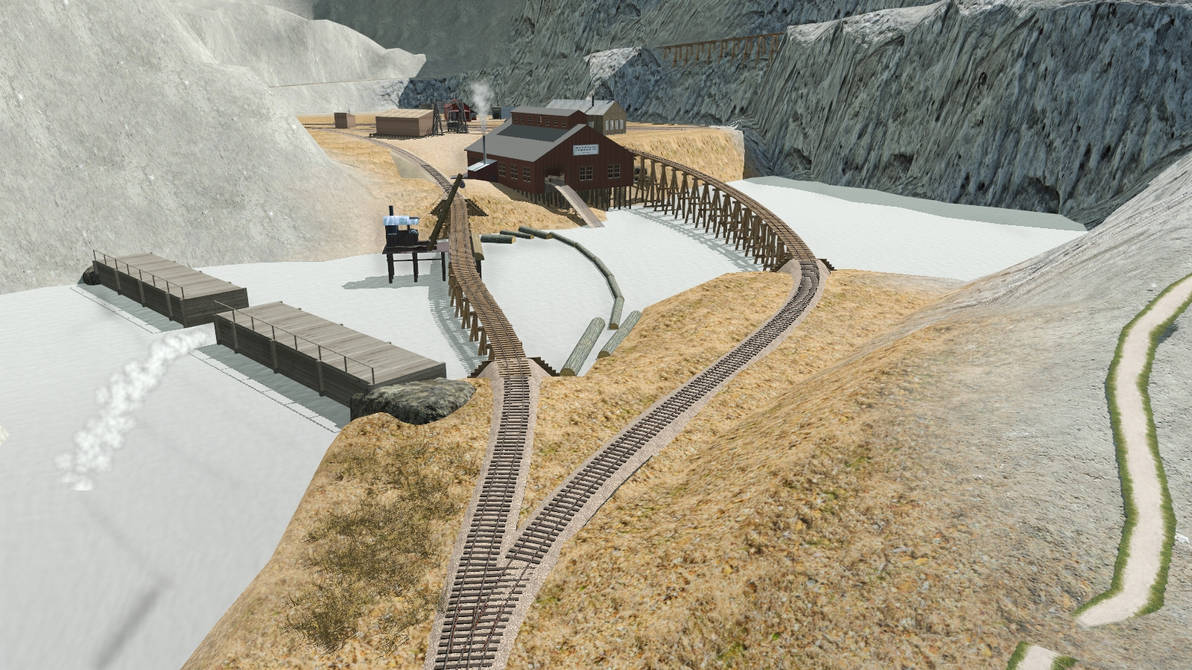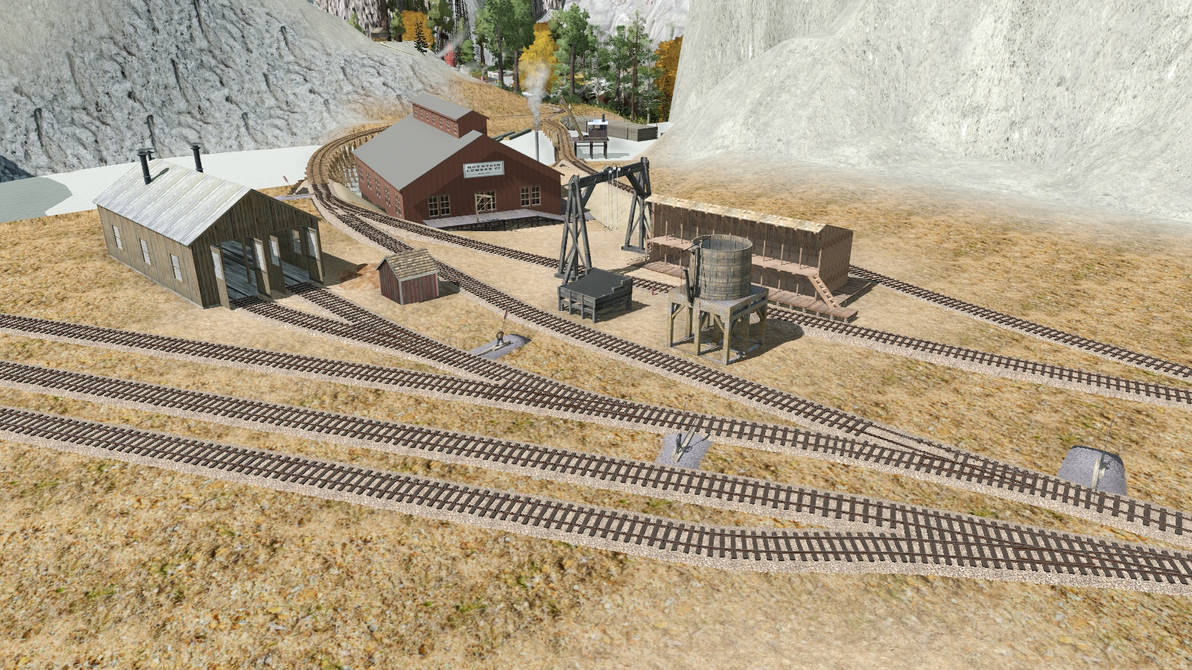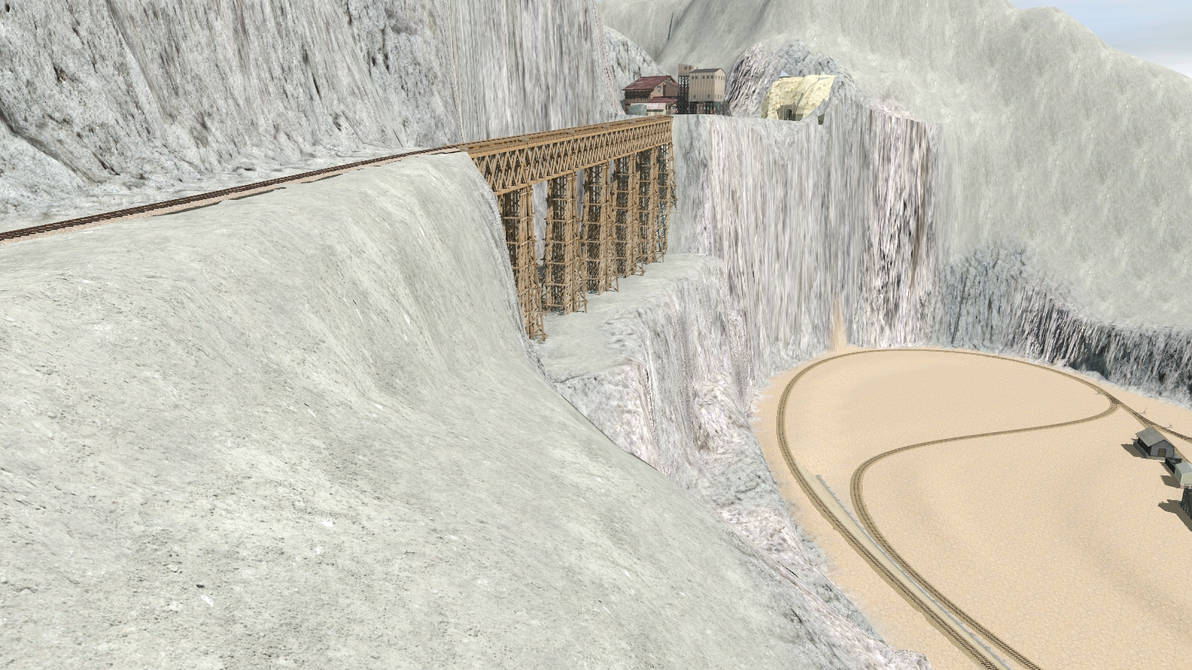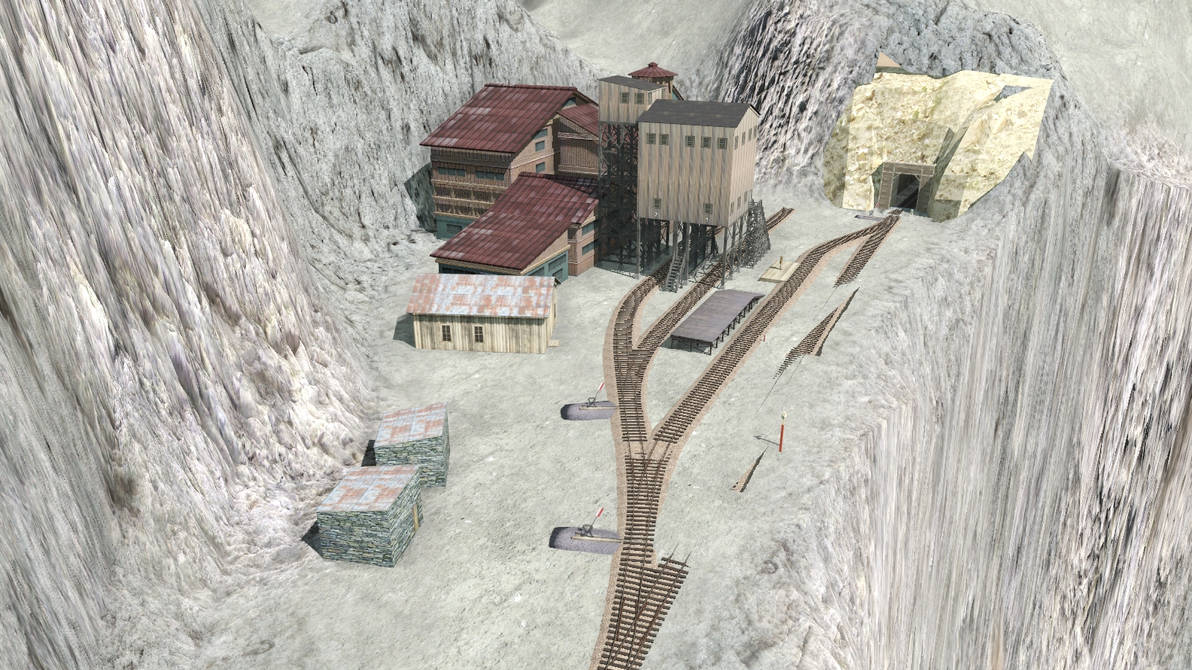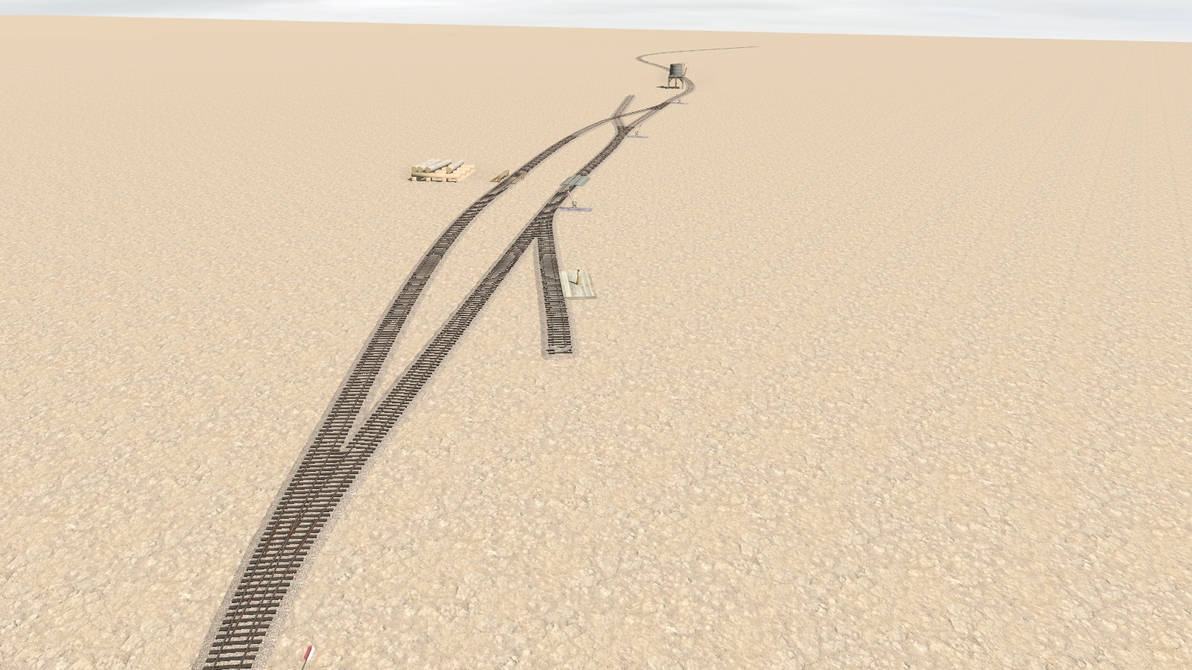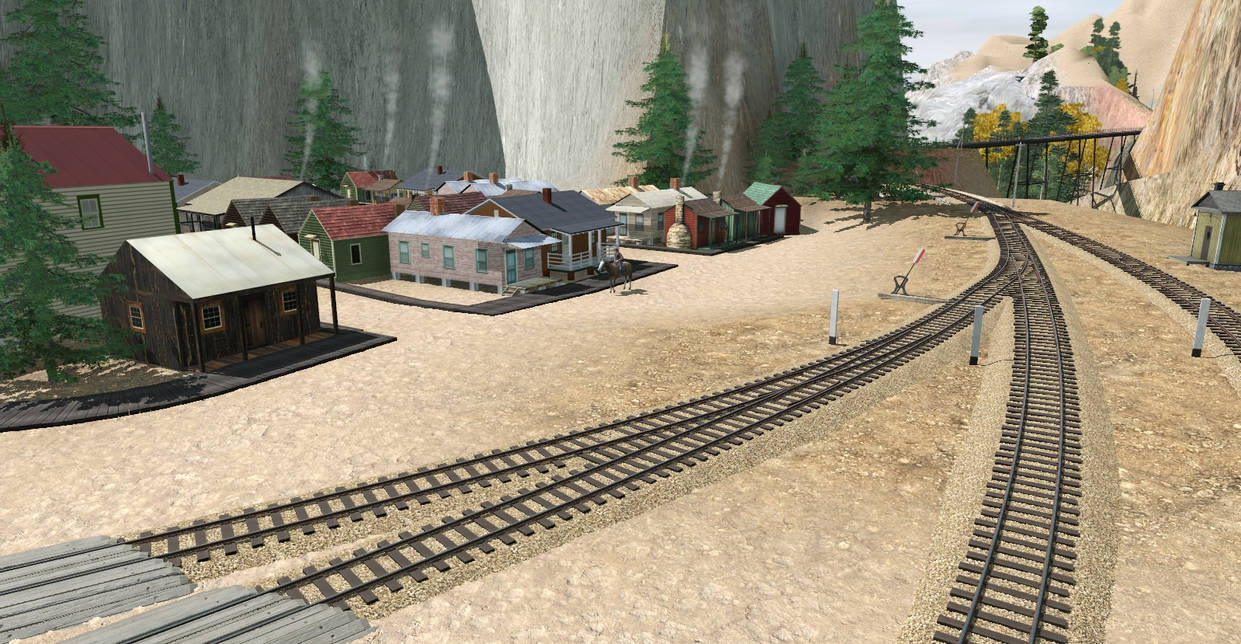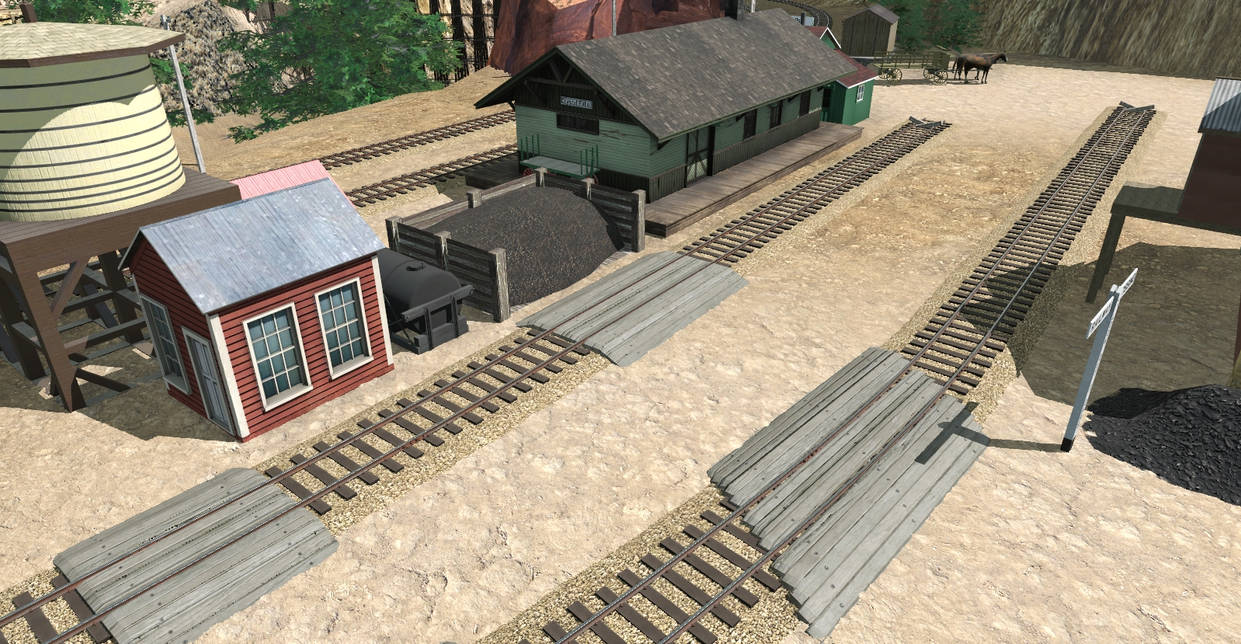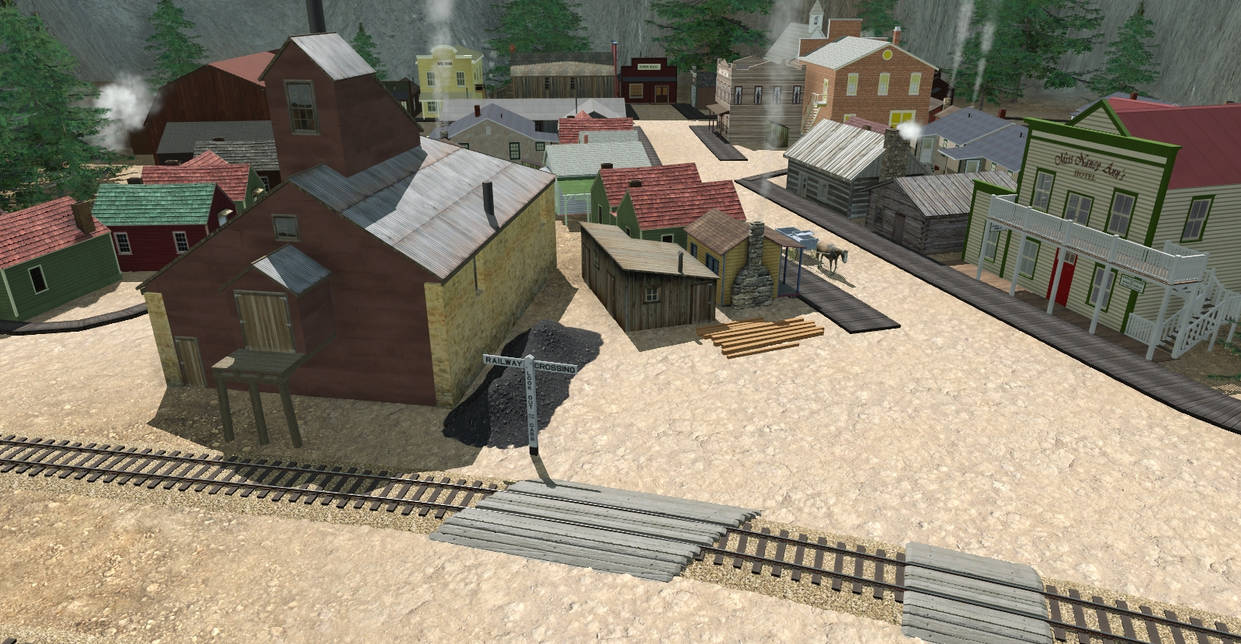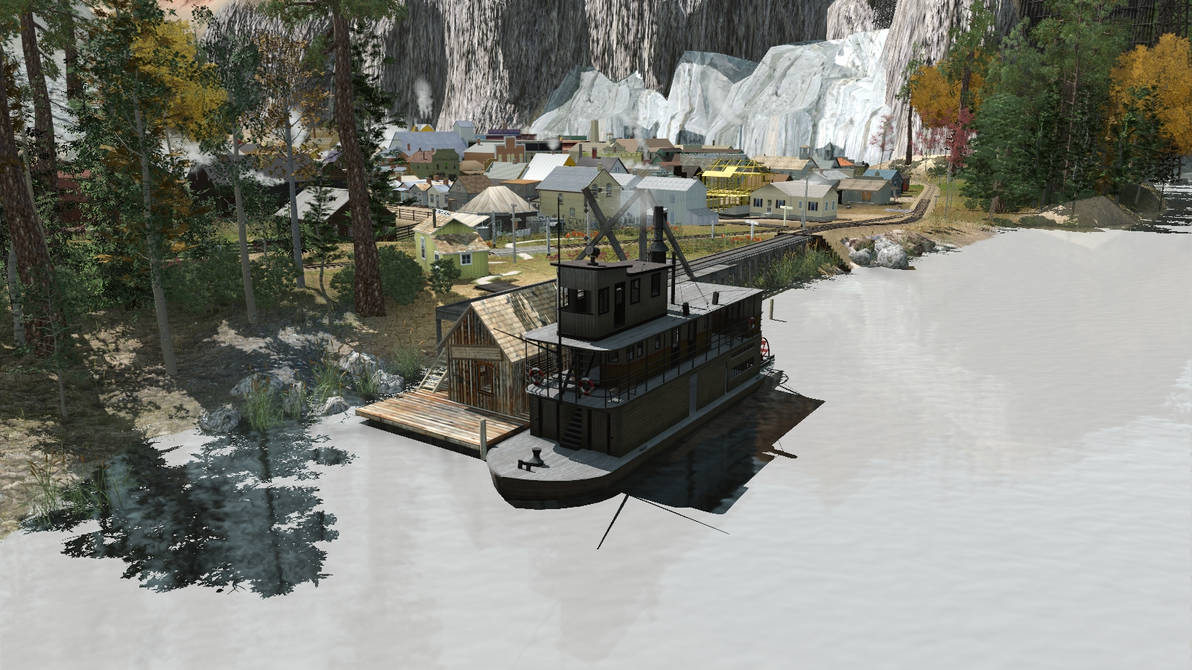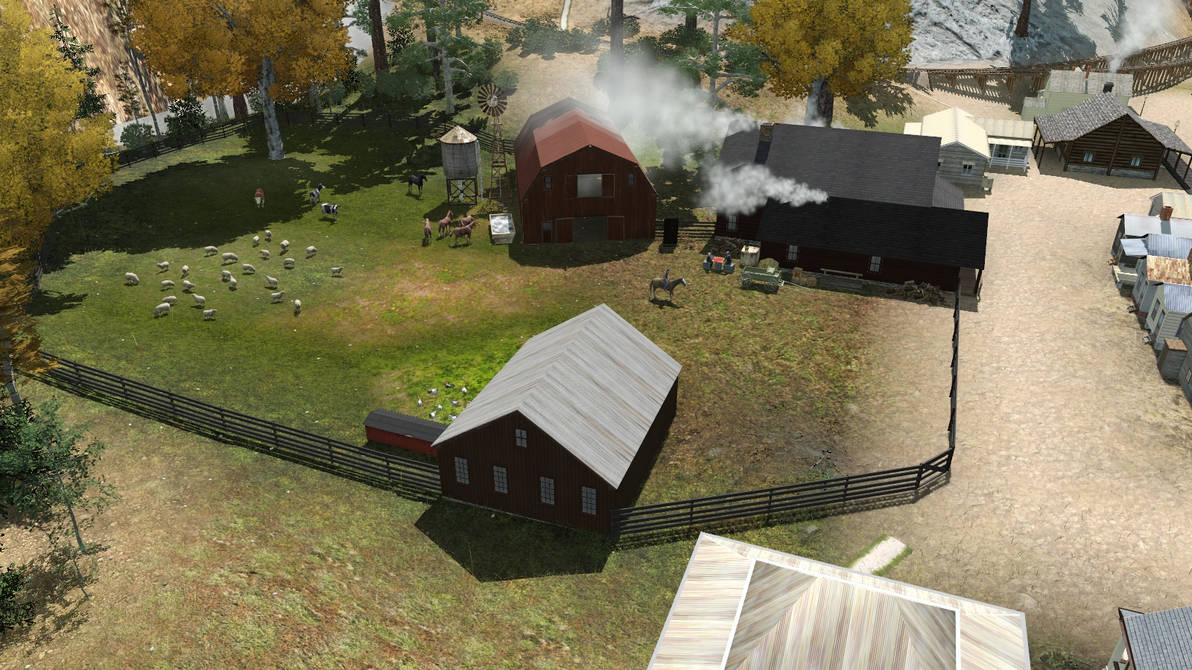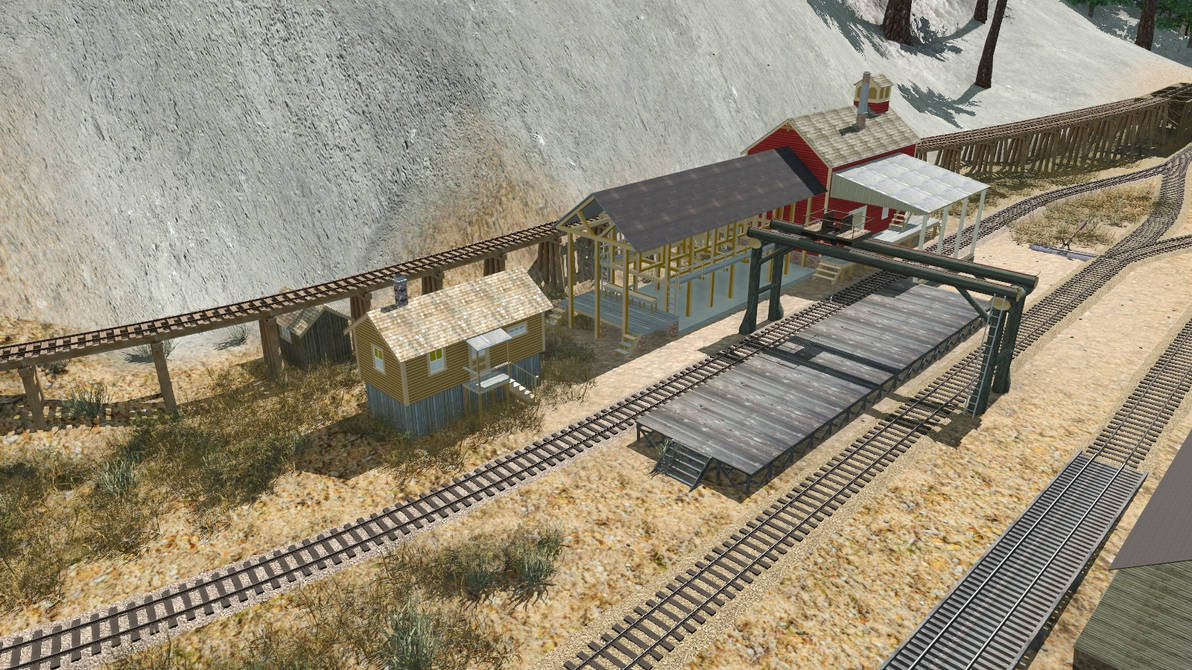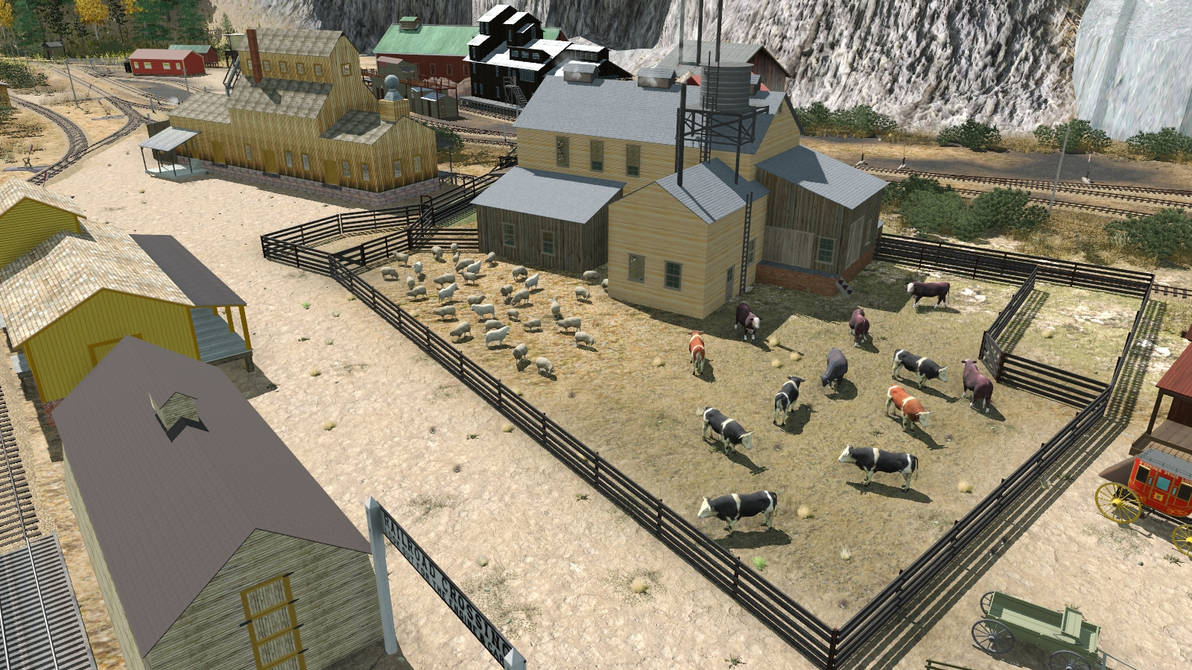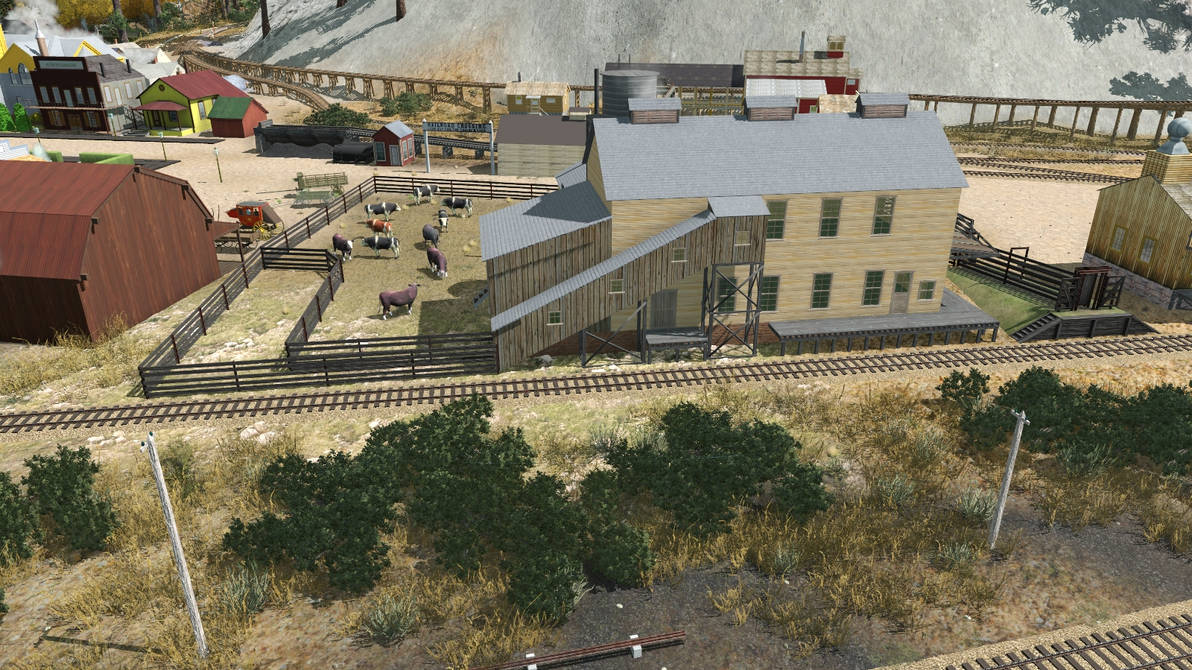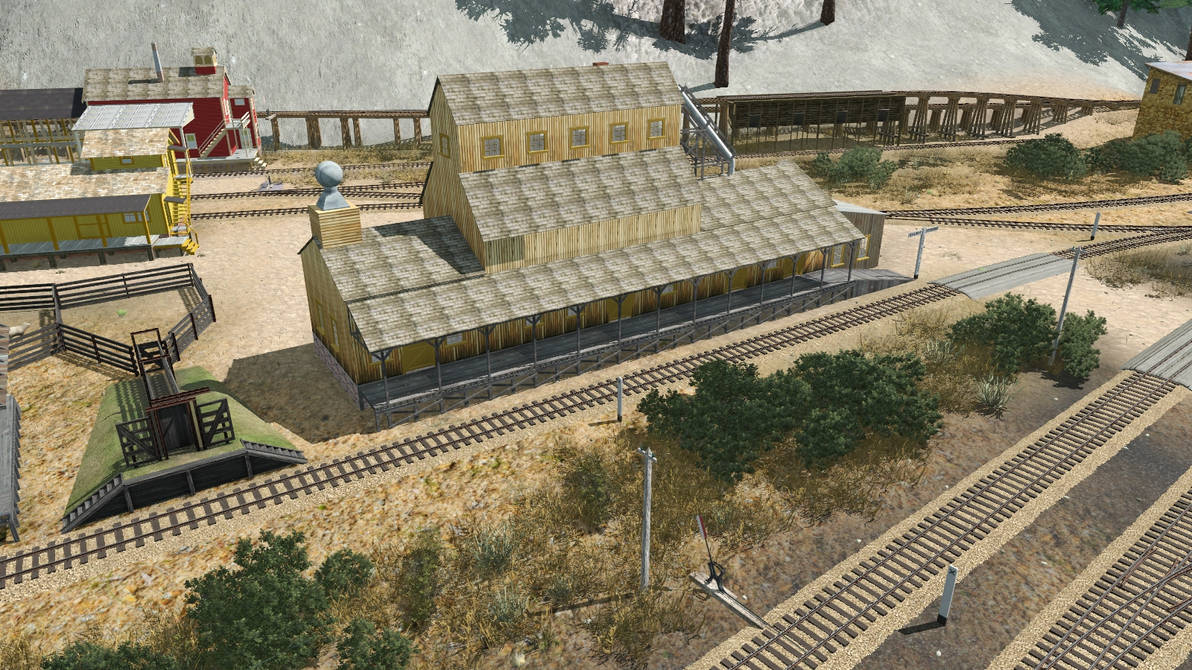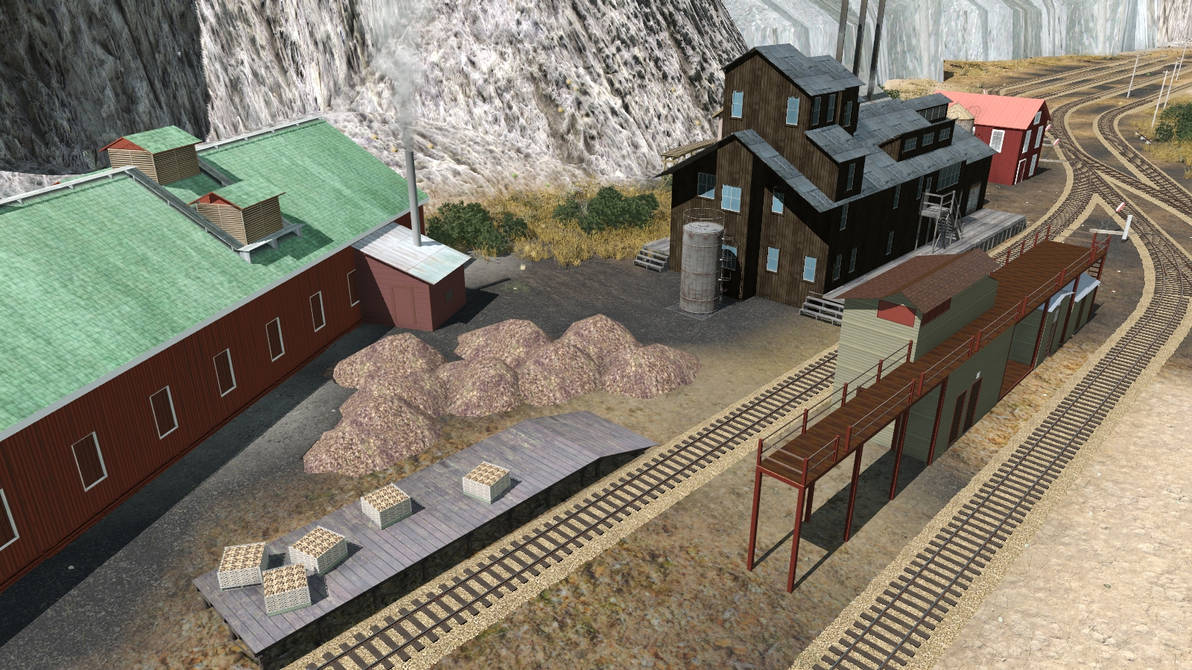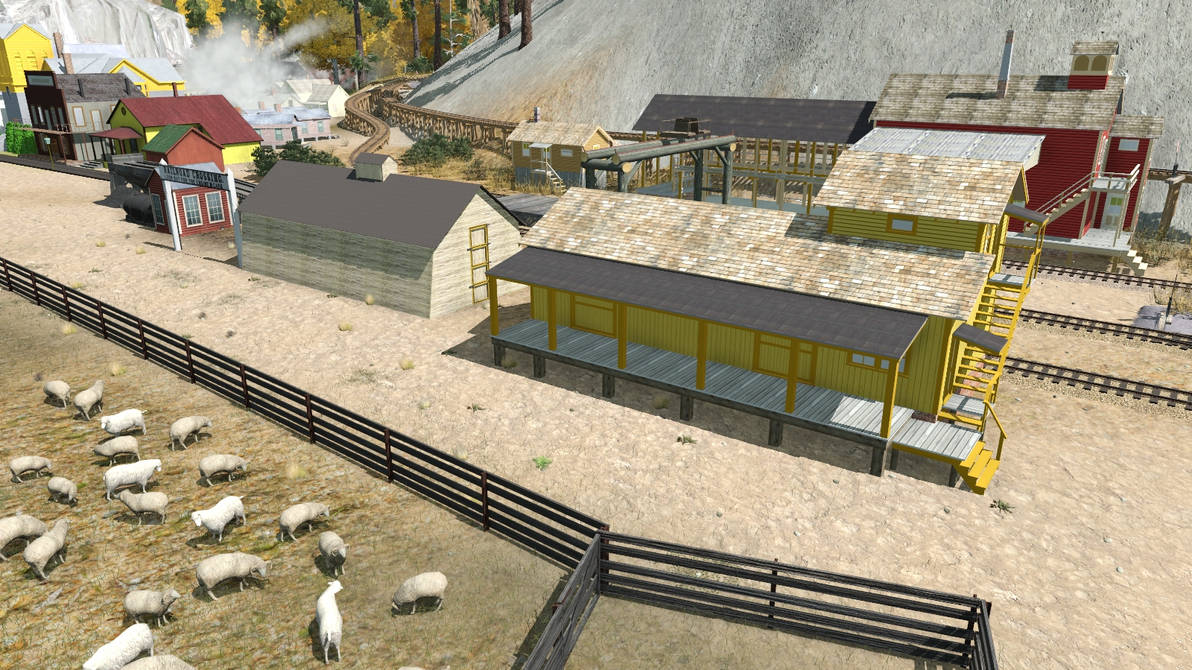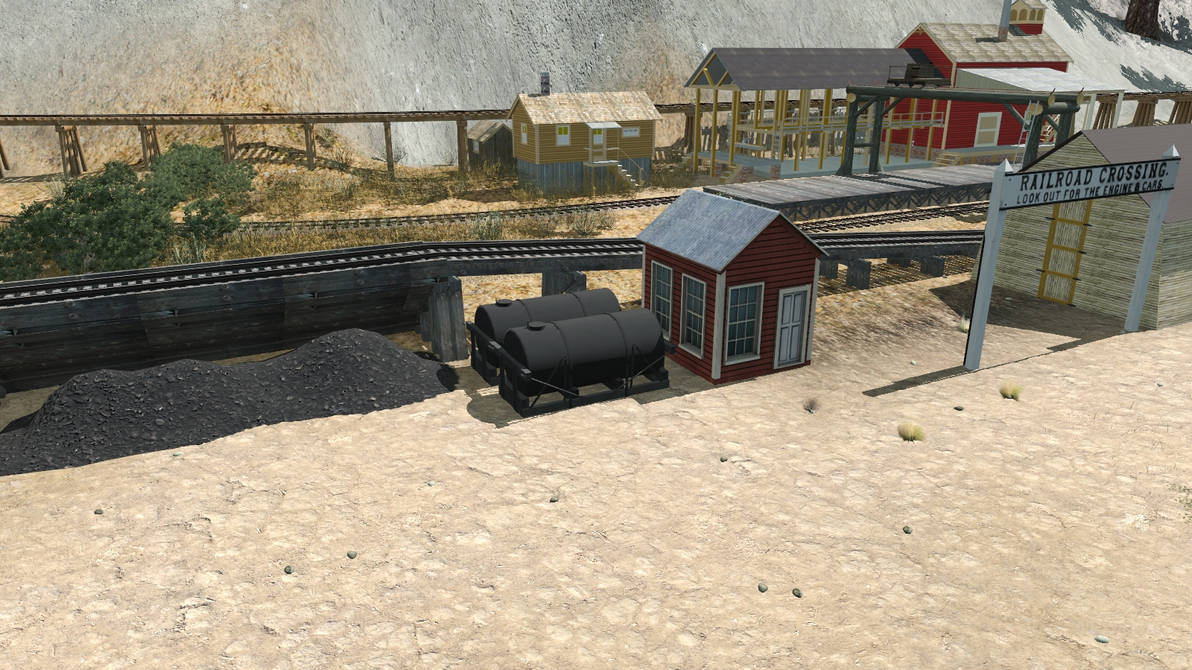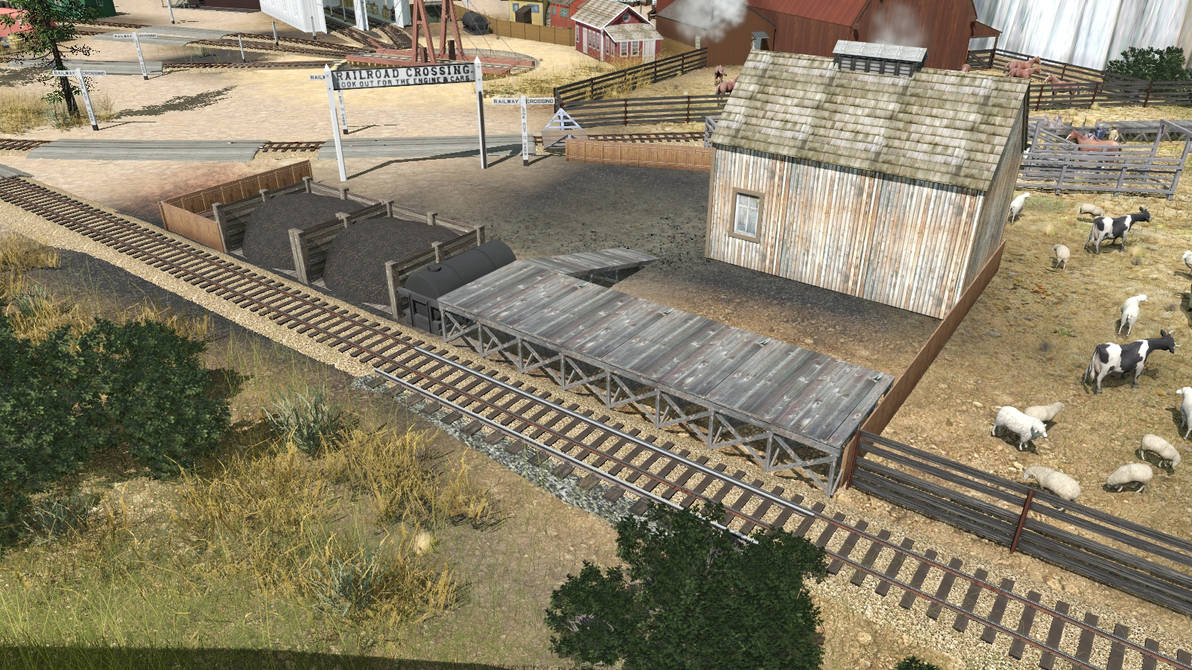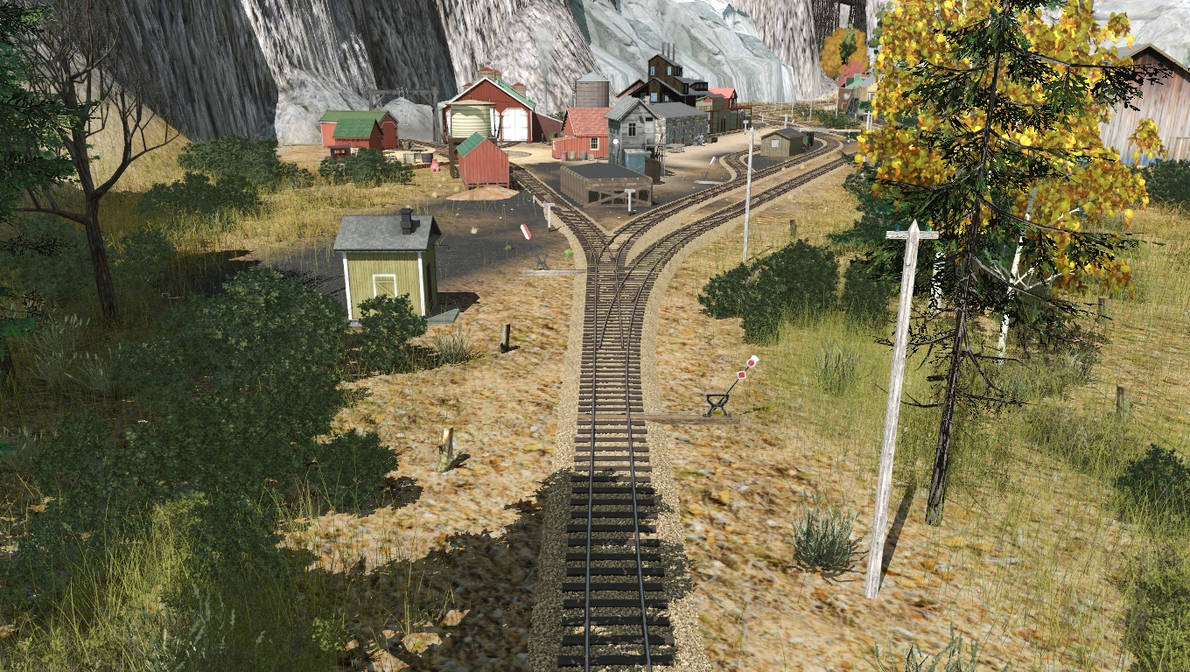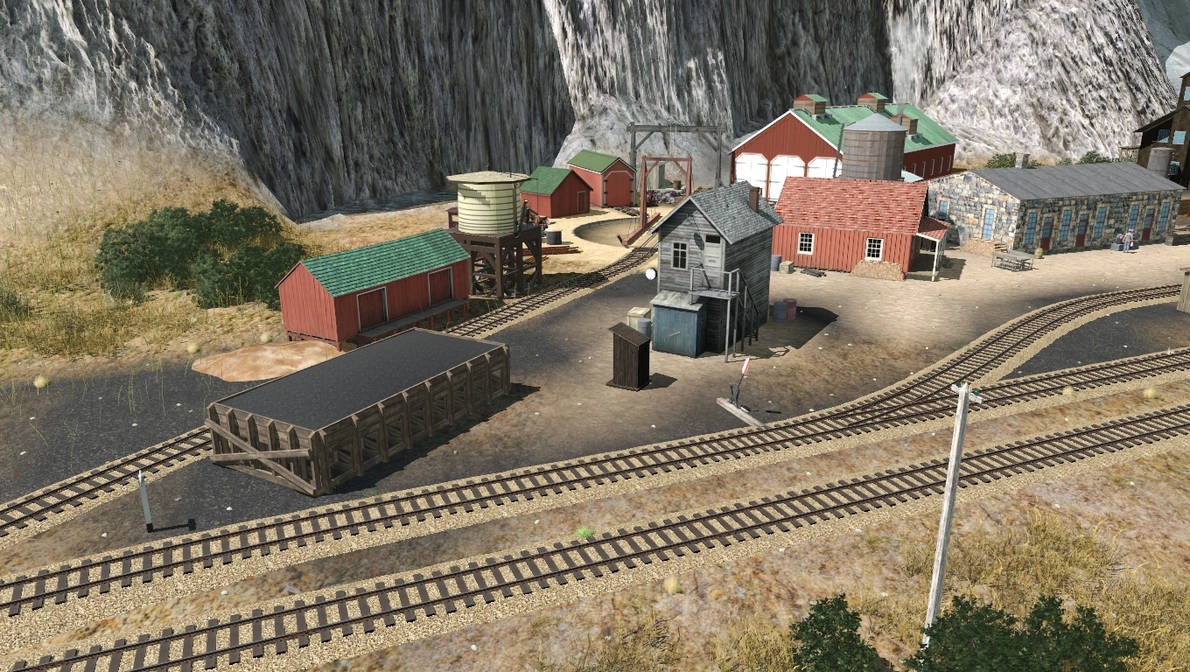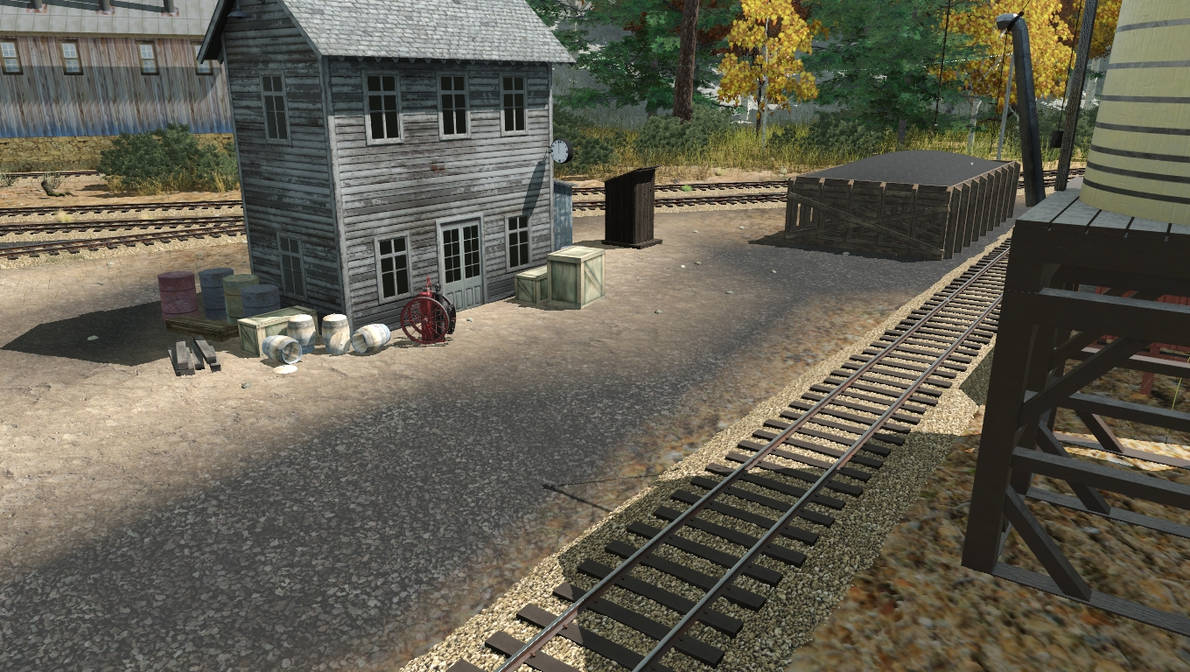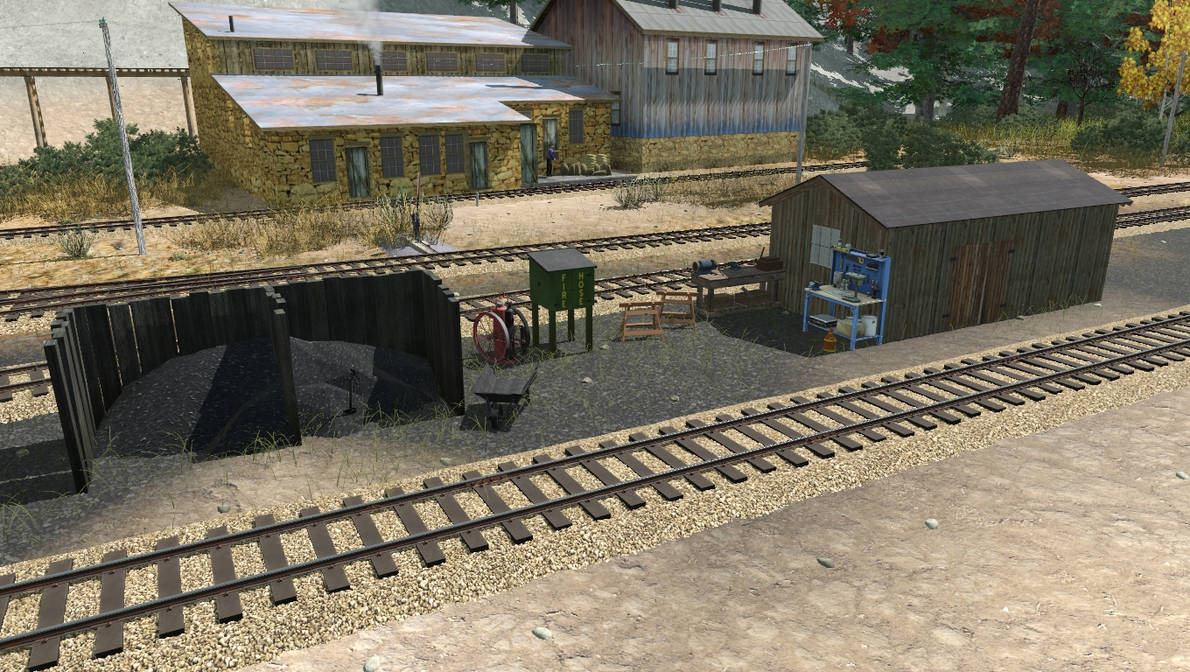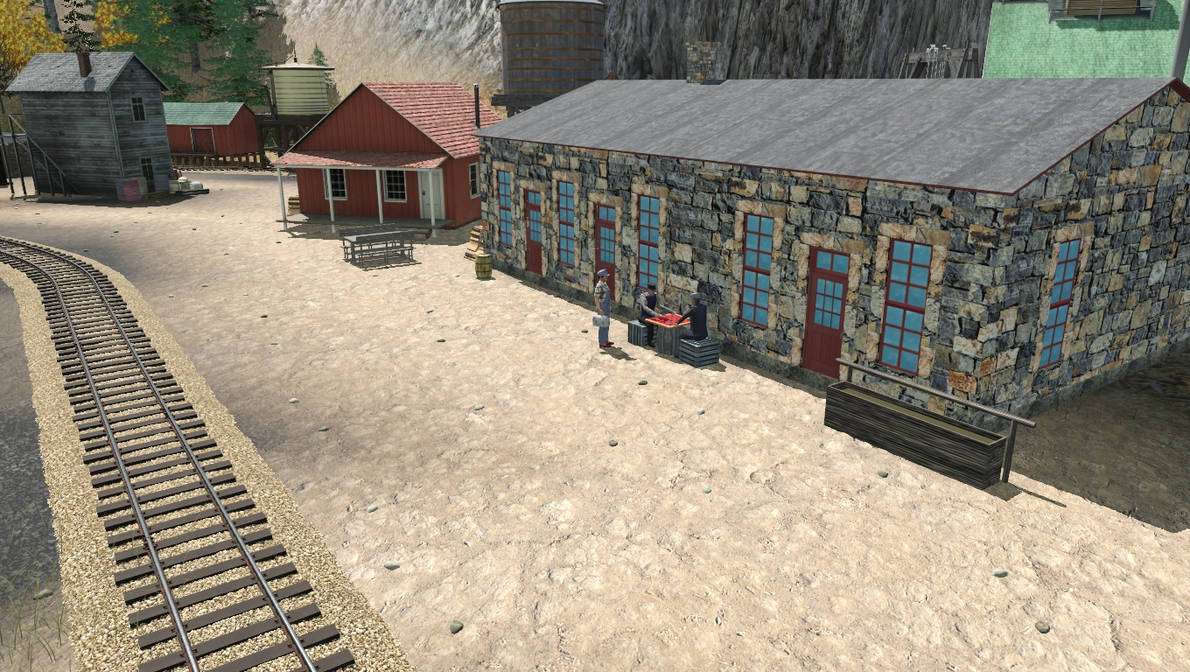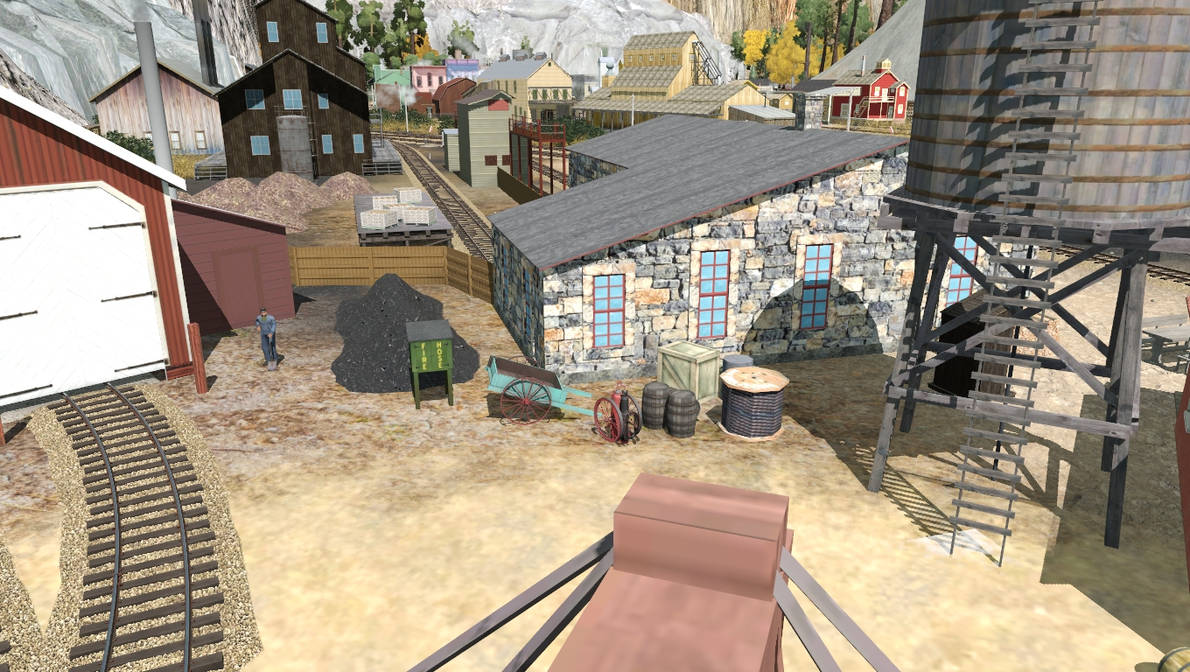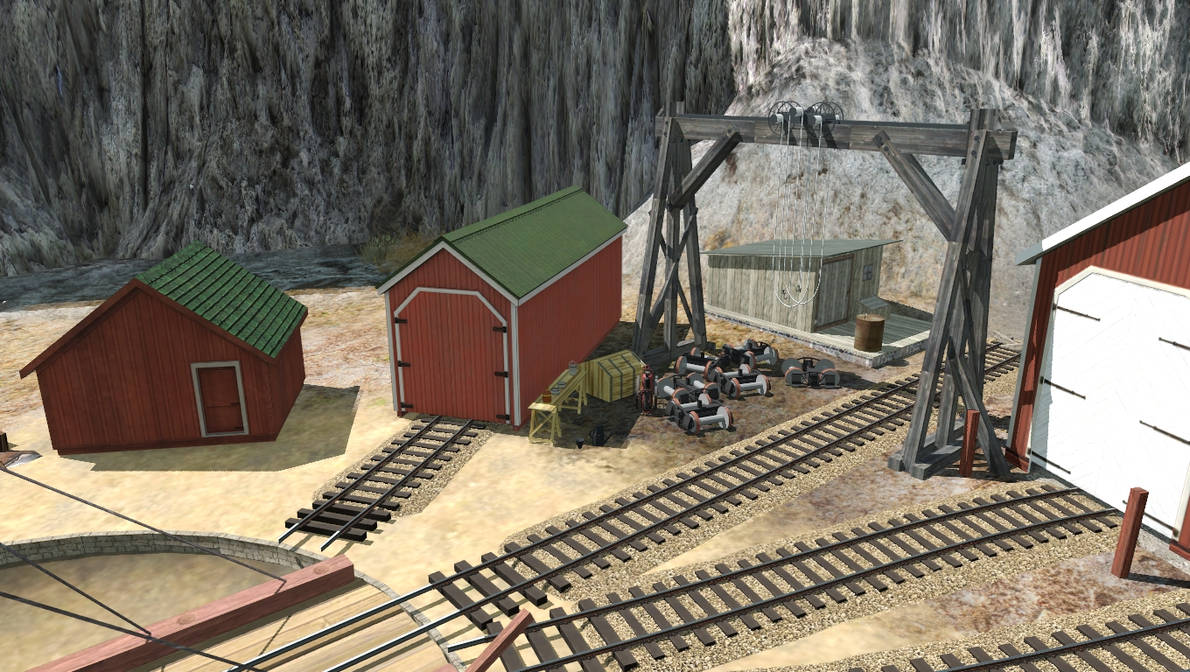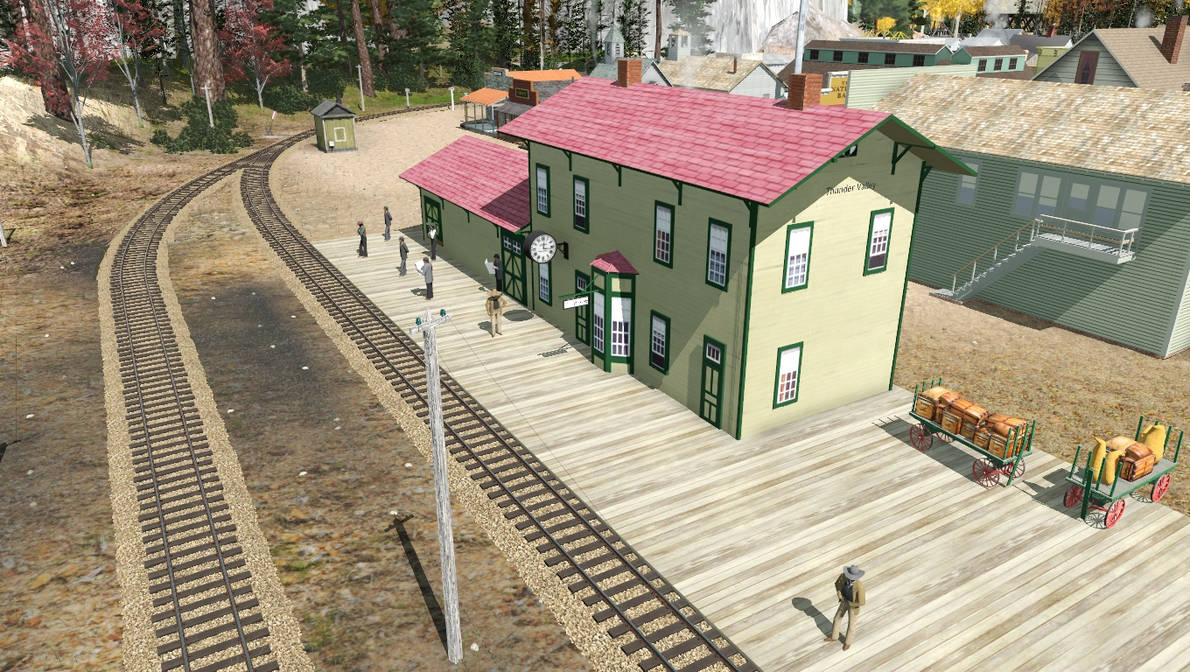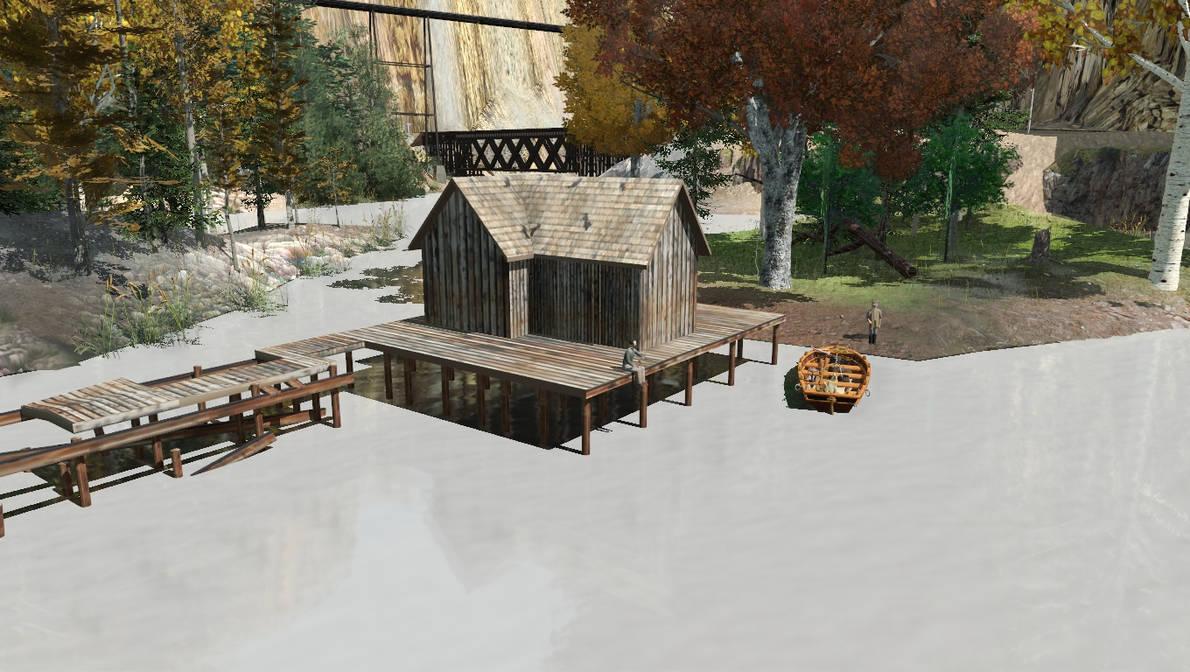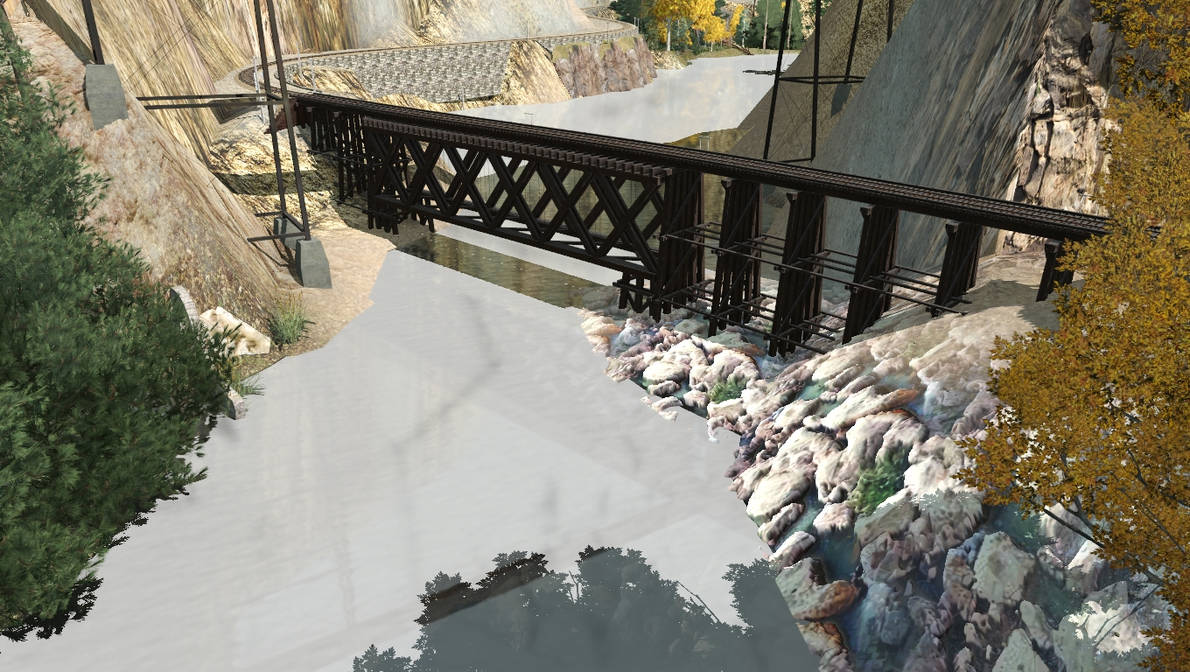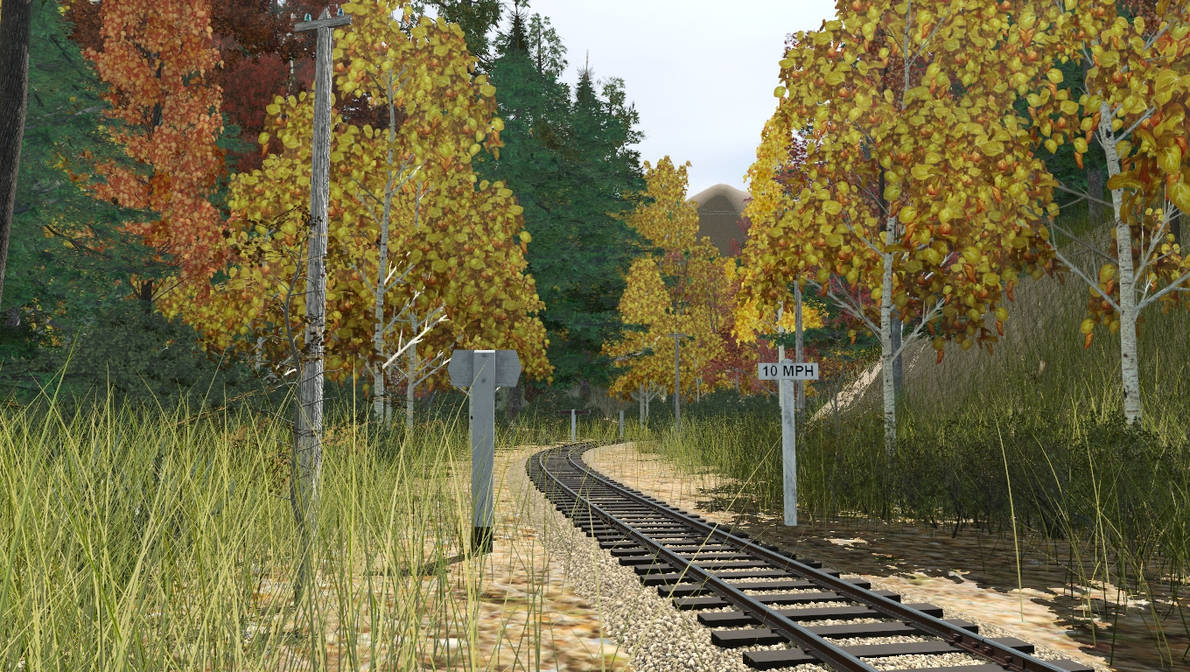rogueranger1993
Narrow Gauge Enthusiast
So, I've gotten to a point where I'm feeling brave enough to share screenies of my current WiP route, which is also my first real route that I hope to complete.
To begin with, the story for this route starts way back in TANE, when I first tried my hand at making it. I was unsatisfied with the results I was getting and abandoned the idea until TRS2019 released. After I grabbed the Platinum edition, I got started on building a new version of the route, and this time I'm happy with the results I'm getting and am hoping to finish it someday soon. To date, the layout got worked on for a while, before I took a long break and then came back to it recently, and parts of it have been through multiple iterations as the concept evolved.
The route is really a 'model railroad', though I have chosen not to include layout-esque elements, as I wanted my 'model' to look like it actually belonged in the real world - at least somewhat. The initial inspiration for the route was the track plan "Red Mountain Railroad", featured in the book 48 Top-Notch Track Plans, published by Kalmbach. I then extended it from the line that originally entered a staging area, and the beast has only grown since then. When modelling, I try to replicate a scene or a feeling that I get after seeing an image from my decently sized railroad reference collection. As such, the Castle Peak & Pacific is entirely freelance, though I have, in my own head canon, placed the route in the Elk Mountains of west central Colorado, USA. Time period on my route is 1880s or 90s.
The first shot is of the (unfinished) town of Junction, where the CP&P interchanges with the D&RG. Once I finally get started on this section of the layout, this hodge-podge of buildings will be laid out to form the industries and the engine terminal, but for now, they sit here in a messy pile while waiting for me to come and organize them.
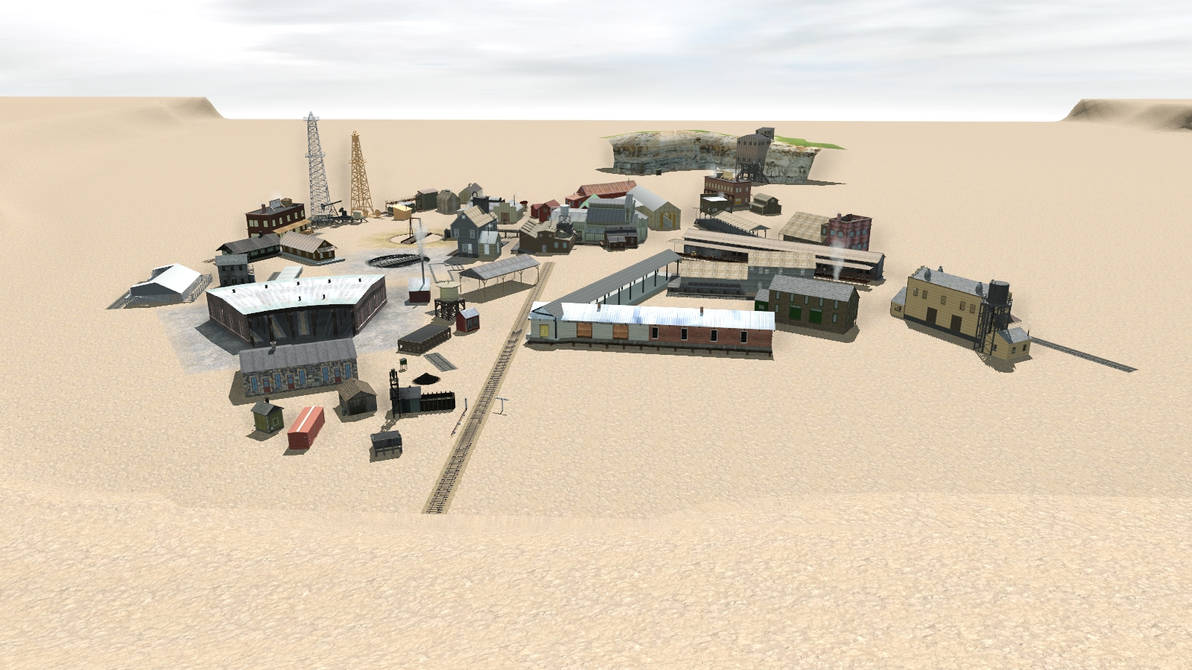
This second screenie shows the town of Gothic, named for a real ghost town northwest of Crested Butte. This town is going to be a real industrial one, hosting a lime kiln, coke ovens, a dynamite factory, and an oil refinery, to name a few. Just to the right you see the tunnel leading to Junction. The climbing horshoe curve was inspired by Tanglefoot Curve on the Cumbres & Toltec Scenic RR. The grade from Junction to Thunder Valley is only about 1.7% at the steepest.
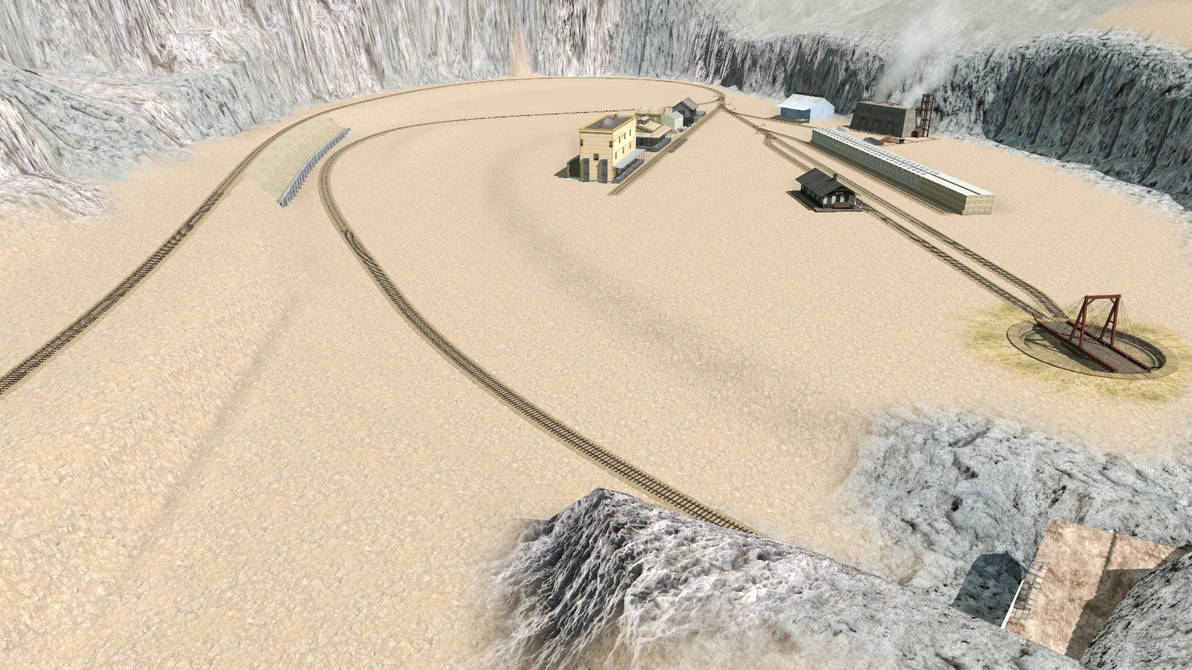
This shot, taken from the air above Gothic, shows how the line continues into the more ‘finished’ part of the layout.
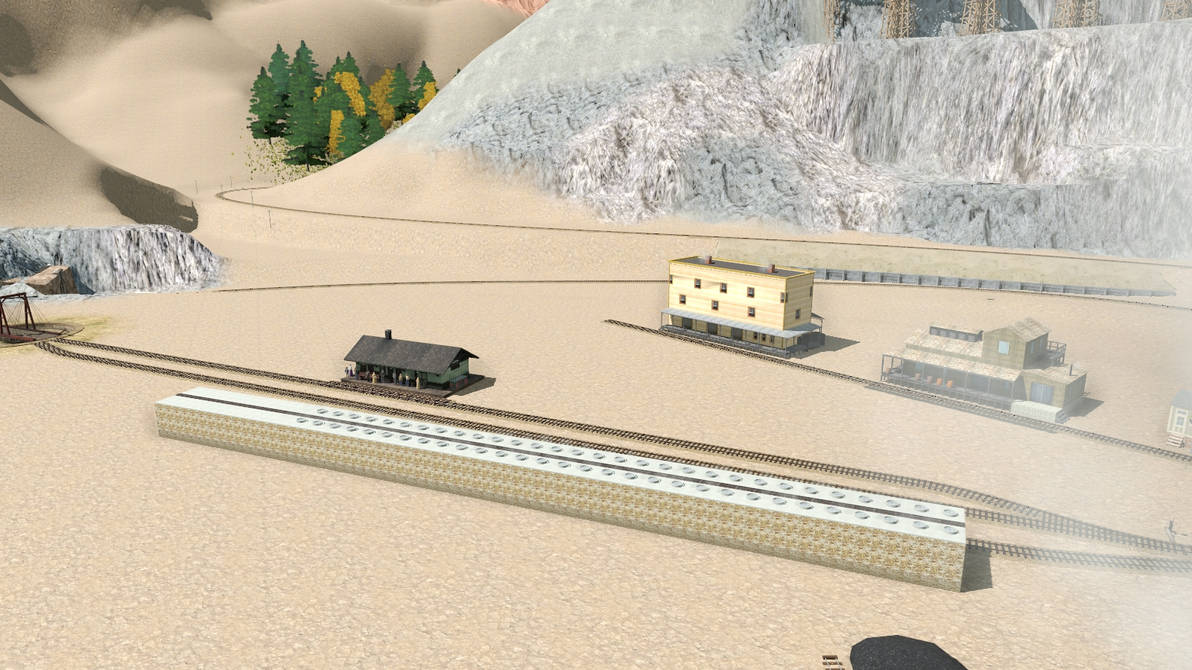
Here you can see how the line winds its way through a narrow cut to reach the next town on the layout – Thunder Valley.
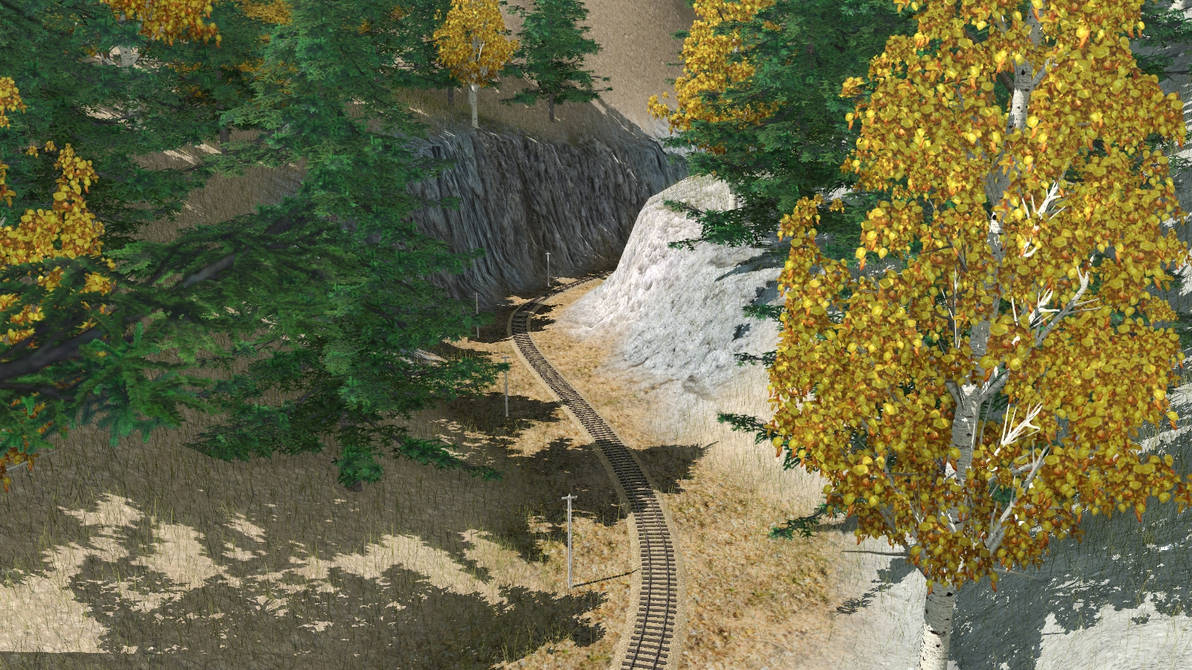
This is Thunder Valley – on the left is the engine terminal, behind which is the sugar factory and the ice house. On the right is the smelter, and the middle is dominated by the feed mill and meat packers. Thunder Valley has been the one area on the CP&P that has changed the most, though I’m currently quite satisfied with it for the time being.
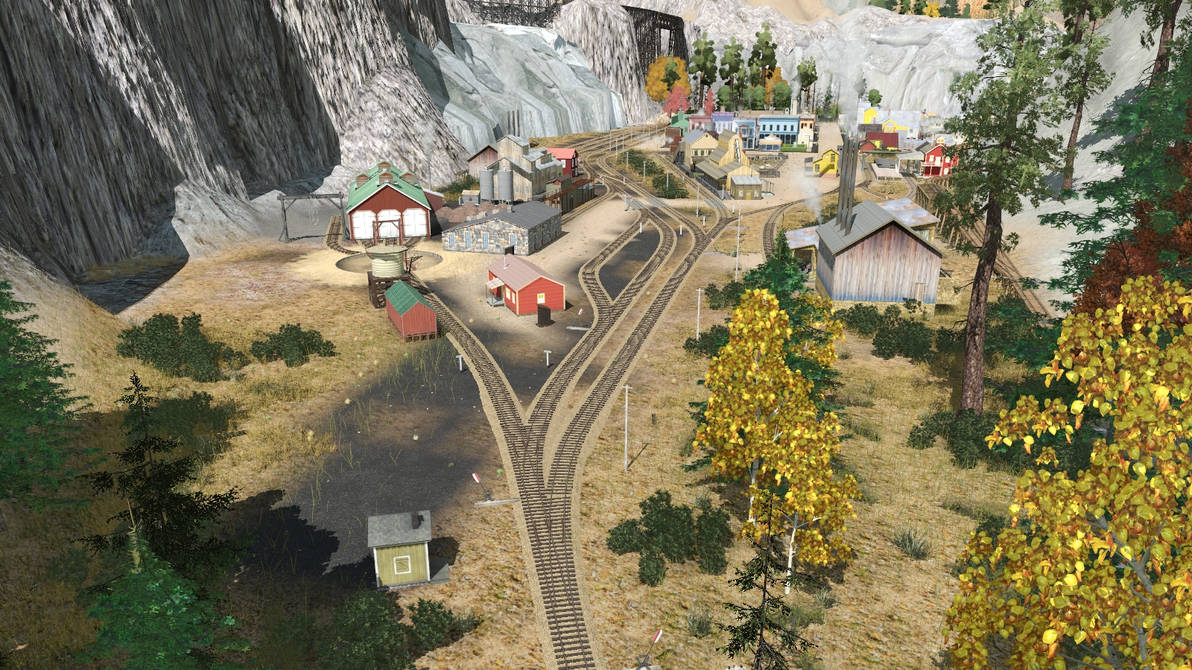
Here we get a better view of the engine facility in Thunder Valley – On the very left is the sand house and water tower, opposite them is the yard office, and the stone structure is the bunkhouse. Behind the bunkhouse is the engine shed, which is going to have a detailed machine shop in the back, with a RIP track on the left. Thunder Valley acts as a division point between the lower line running to Junction, and the Upper Line running to Castle Peak.
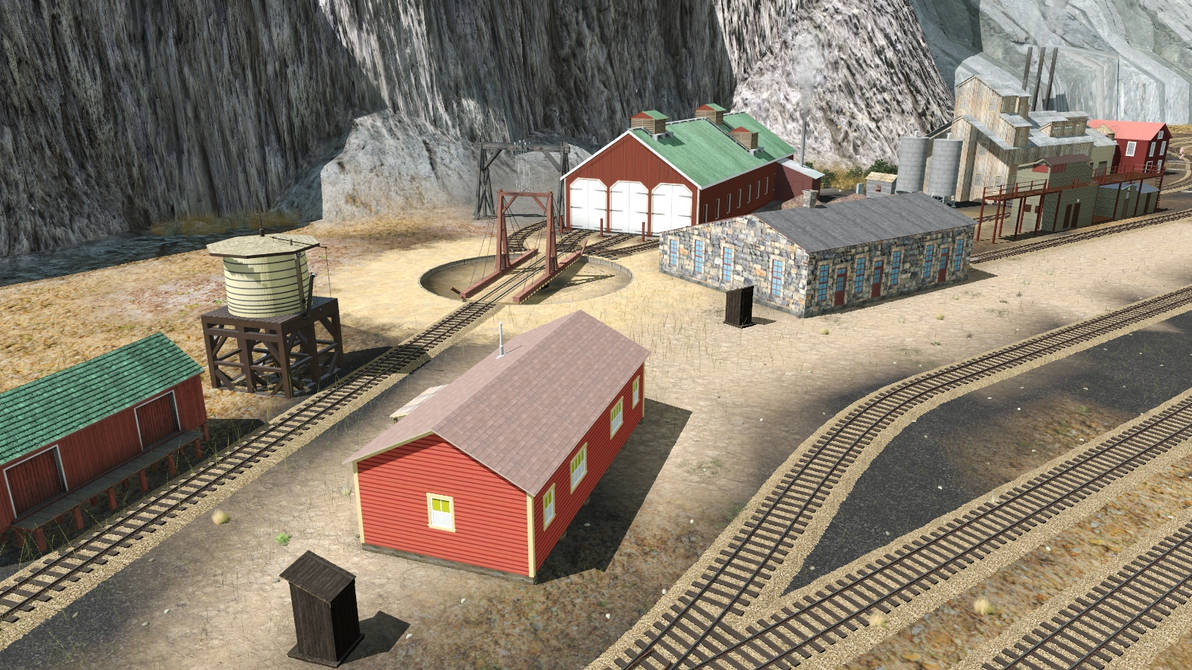
This is the smelter, and to the left, you can see the coal bins – we’ll get into their use a little bit later on…

This is a shot of Spencer’s Landing, where freight and passengers are transferred onto steamboats to be carried down the Crystal River to Lake Something-or Other (name is currently undetermined). Yes, I am aware that Colorado did not have any rivers that played host to steamboat service, but I wanted a steamboat, so there it is!
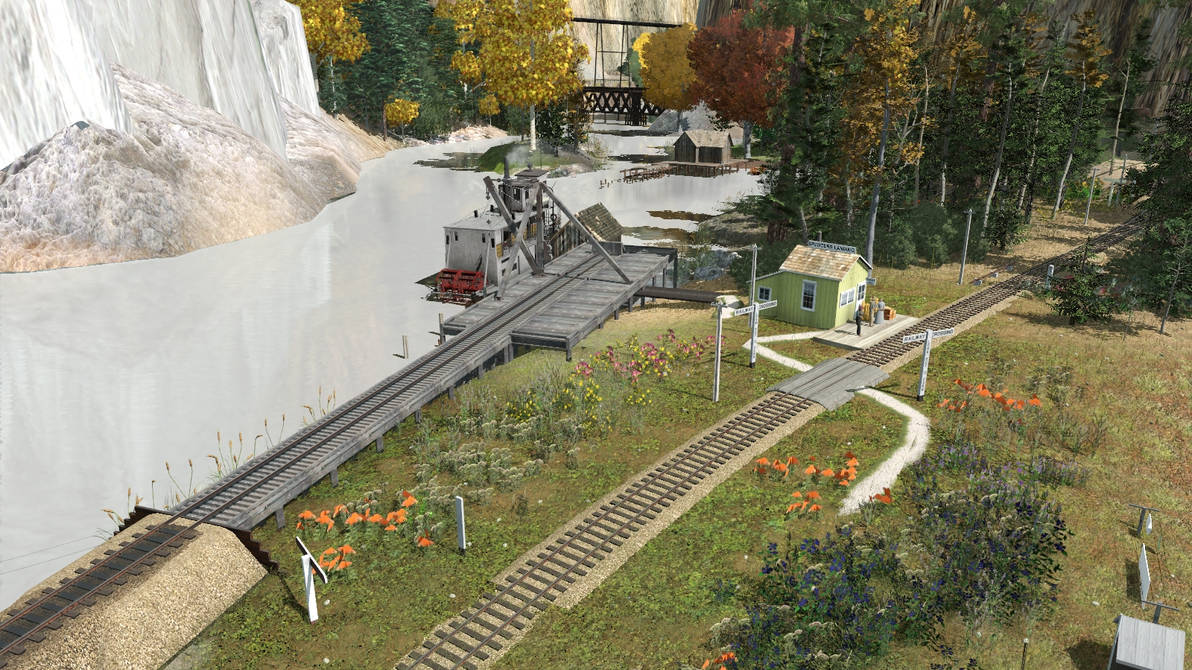
To begin with, the story for this route starts way back in TANE, when I first tried my hand at making it. I was unsatisfied with the results I was getting and abandoned the idea until TRS2019 released. After I grabbed the Platinum edition, I got started on building a new version of the route, and this time I'm happy with the results I'm getting and am hoping to finish it someday soon. To date, the layout got worked on for a while, before I took a long break and then came back to it recently, and parts of it have been through multiple iterations as the concept evolved.
The route is really a 'model railroad', though I have chosen not to include layout-esque elements, as I wanted my 'model' to look like it actually belonged in the real world - at least somewhat. The initial inspiration for the route was the track plan "Red Mountain Railroad", featured in the book 48 Top-Notch Track Plans, published by Kalmbach. I then extended it from the line that originally entered a staging area, and the beast has only grown since then. When modelling, I try to replicate a scene or a feeling that I get after seeing an image from my decently sized railroad reference collection. As such, the Castle Peak & Pacific is entirely freelance, though I have, in my own head canon, placed the route in the Elk Mountains of west central Colorado, USA. Time period on my route is 1880s or 90s.
The first shot is of the (unfinished) town of Junction, where the CP&P interchanges with the D&RG. Once I finally get started on this section of the layout, this hodge-podge of buildings will be laid out to form the industries and the engine terminal, but for now, they sit here in a messy pile while waiting for me to come and organize them.

This second screenie shows the town of Gothic, named for a real ghost town northwest of Crested Butte. This town is going to be a real industrial one, hosting a lime kiln, coke ovens, a dynamite factory, and an oil refinery, to name a few. Just to the right you see the tunnel leading to Junction. The climbing horshoe curve was inspired by Tanglefoot Curve on the Cumbres & Toltec Scenic RR. The grade from Junction to Thunder Valley is only about 1.7% at the steepest.

This shot, taken from the air above Gothic, shows how the line continues into the more ‘finished’ part of the layout.

Here you can see how the line winds its way through a narrow cut to reach the next town on the layout – Thunder Valley.

This is Thunder Valley – on the left is the engine terminal, behind which is the sugar factory and the ice house. On the right is the smelter, and the middle is dominated by the feed mill and meat packers. Thunder Valley has been the one area on the CP&P that has changed the most, though I’m currently quite satisfied with it for the time being.

Here we get a better view of the engine facility in Thunder Valley – On the very left is the sand house and water tower, opposite them is the yard office, and the stone structure is the bunkhouse. Behind the bunkhouse is the engine shed, which is going to have a detailed machine shop in the back, with a RIP track on the left. Thunder Valley acts as a division point between the lower line running to Junction, and the Upper Line running to Castle Peak.

This is the smelter, and to the left, you can see the coal bins – we’ll get into their use a little bit later on…

This is a shot of Spencer’s Landing, where freight and passengers are transferred onto steamboats to be carried down the Crystal River to Lake Something-or Other (name is currently undetermined). Yes, I am aware that Colorado did not have any rivers that played host to steamboat service, but I wanted a steamboat, so there it is!



